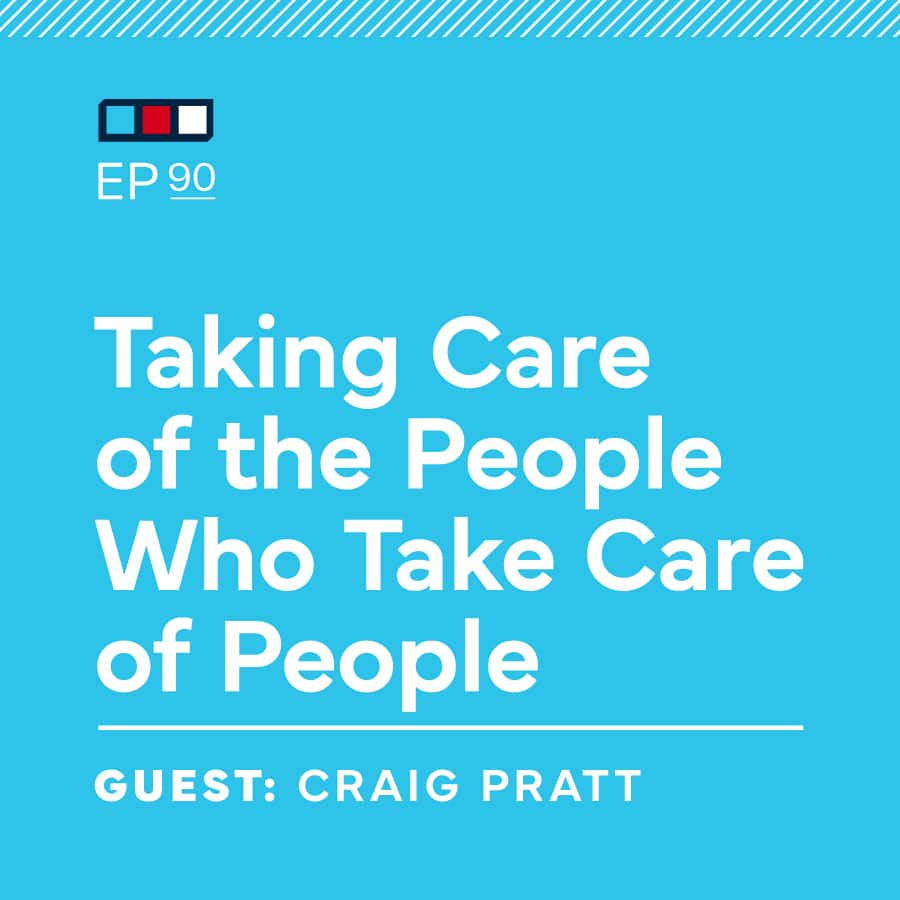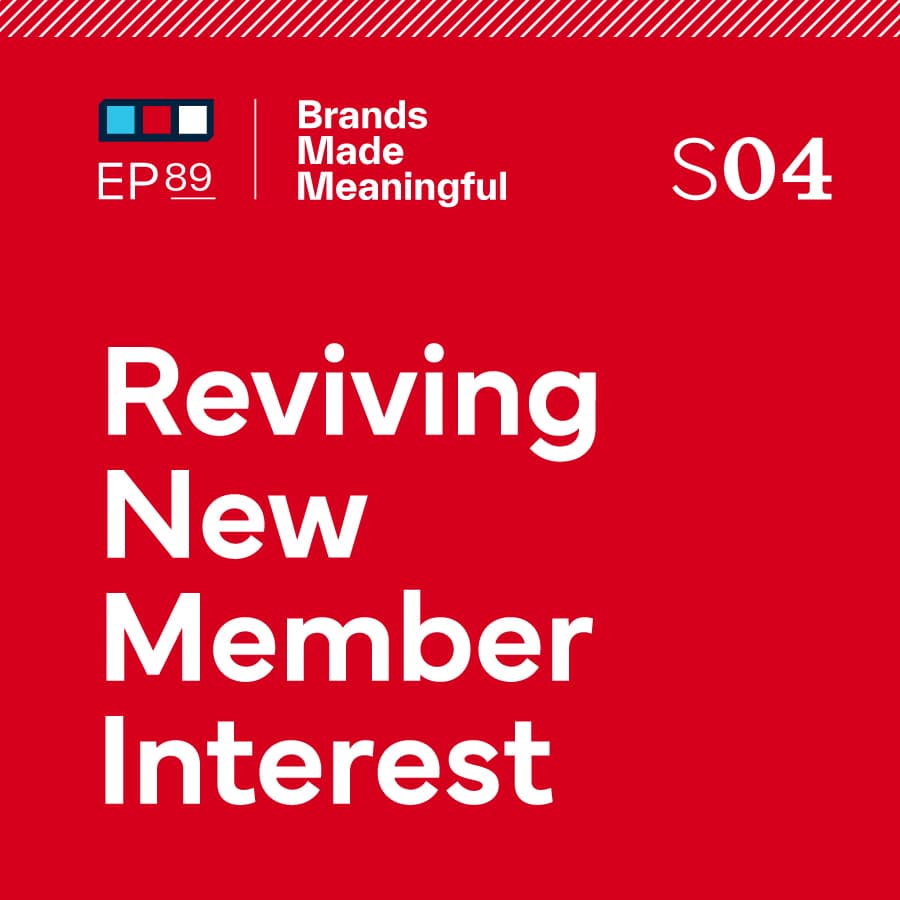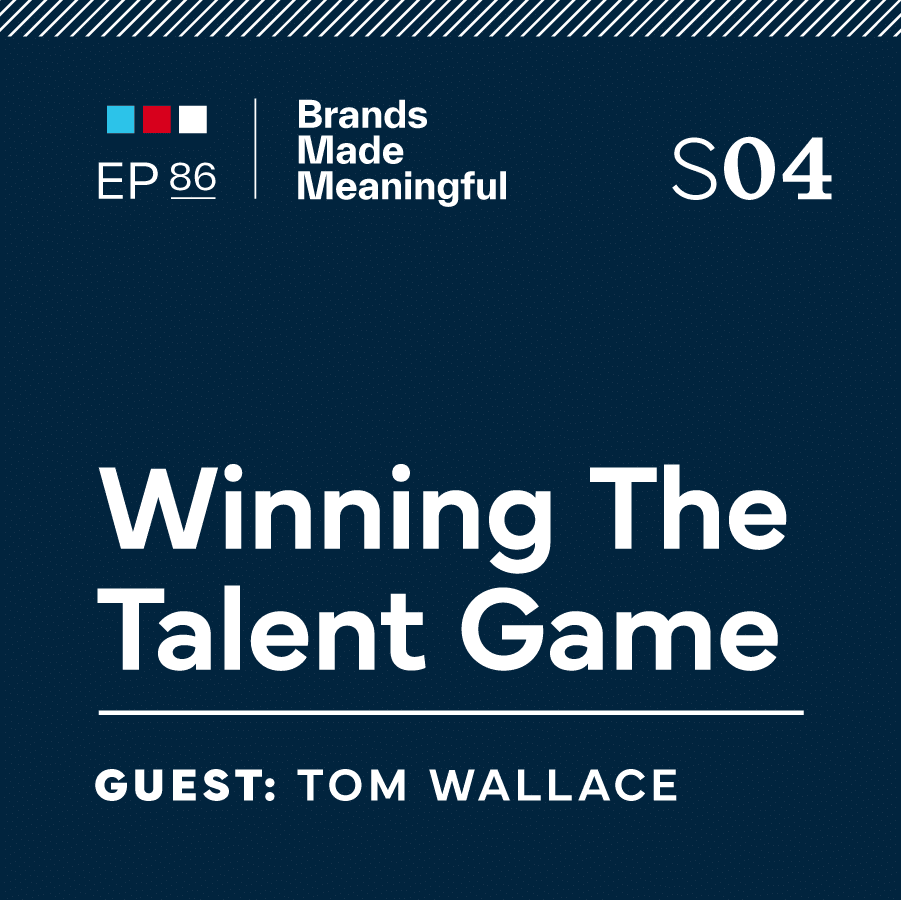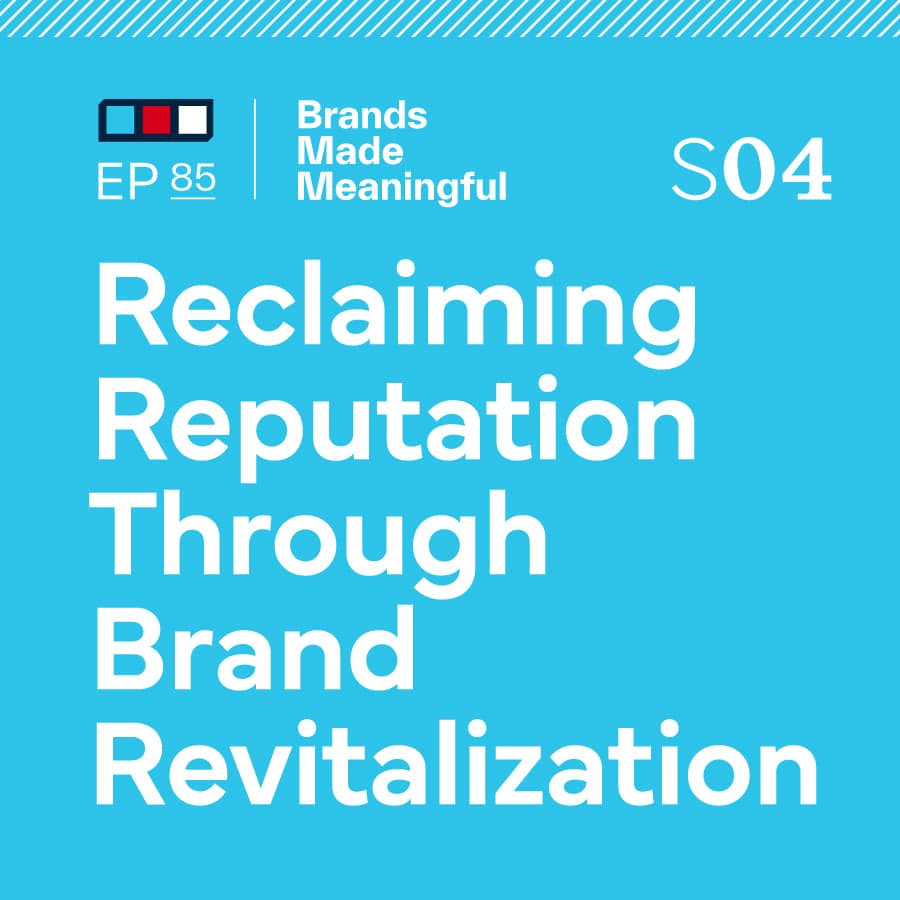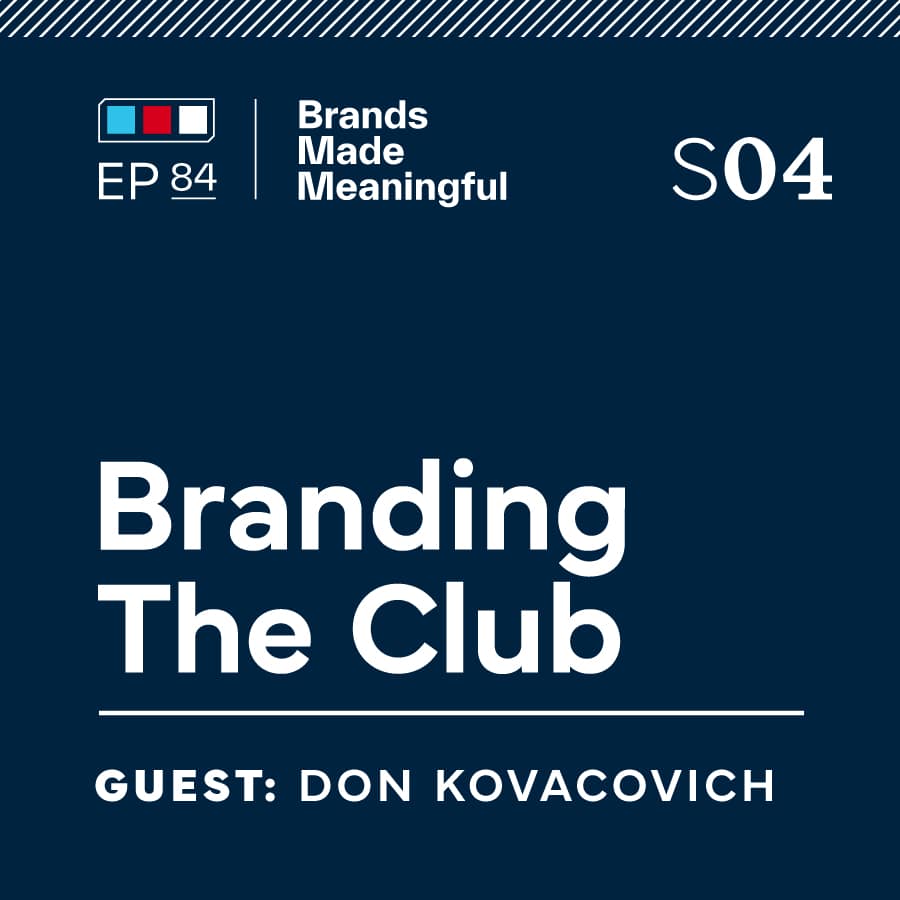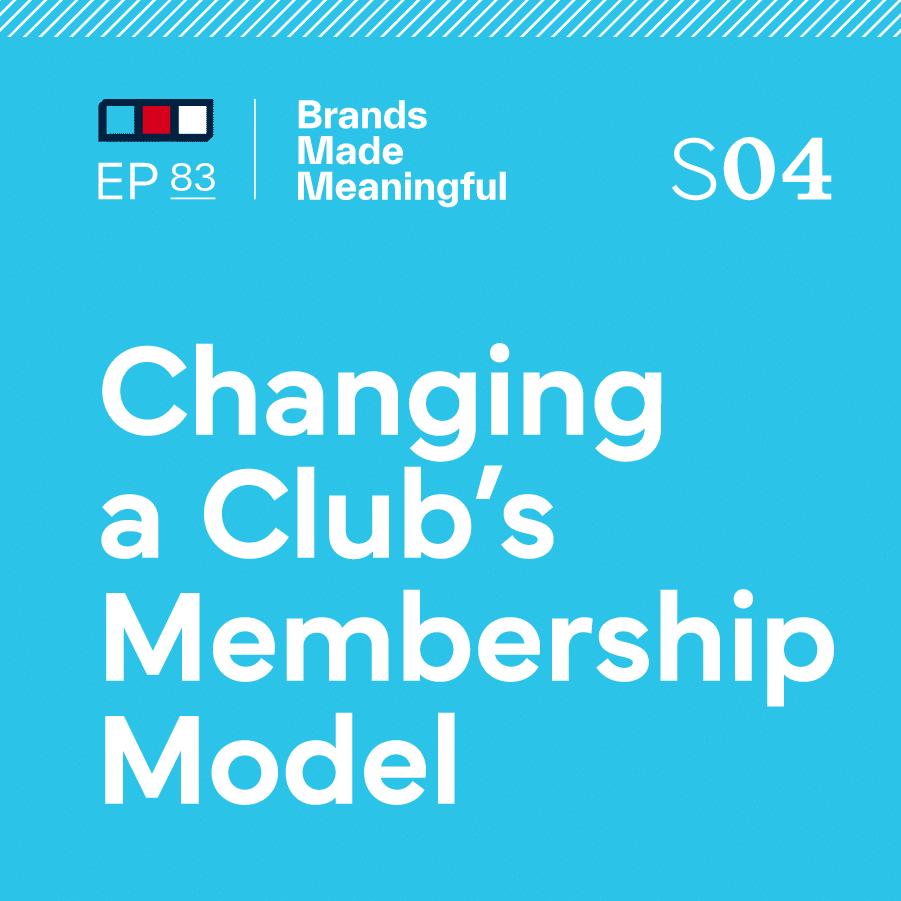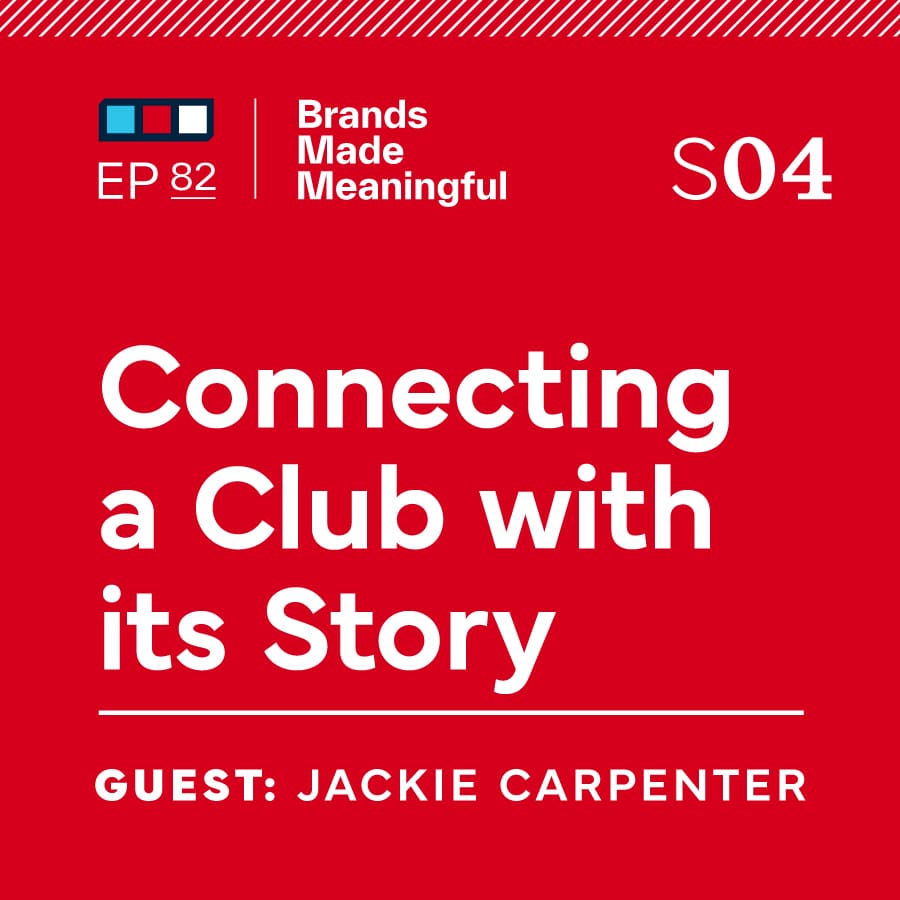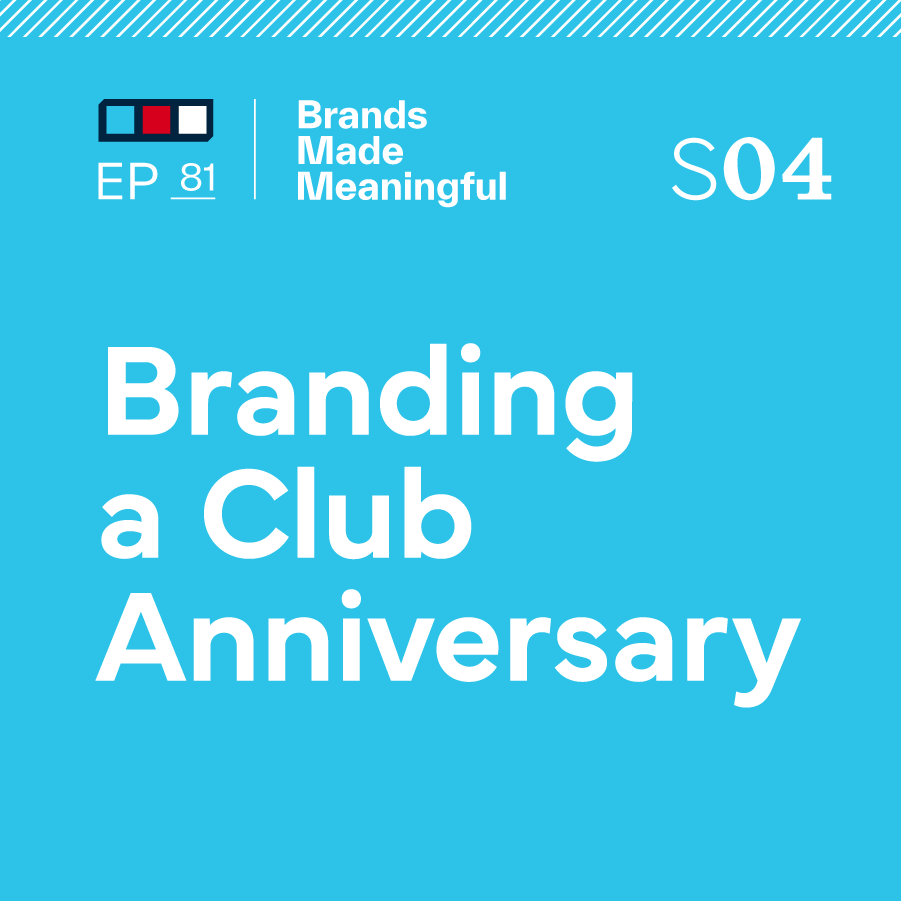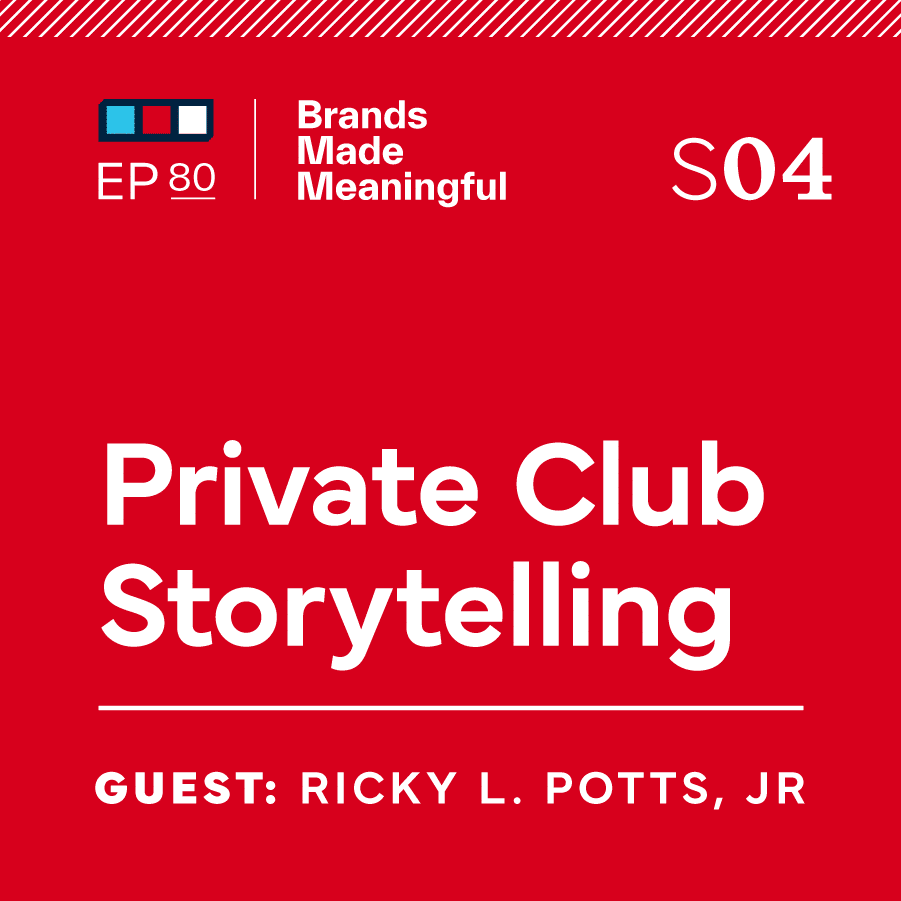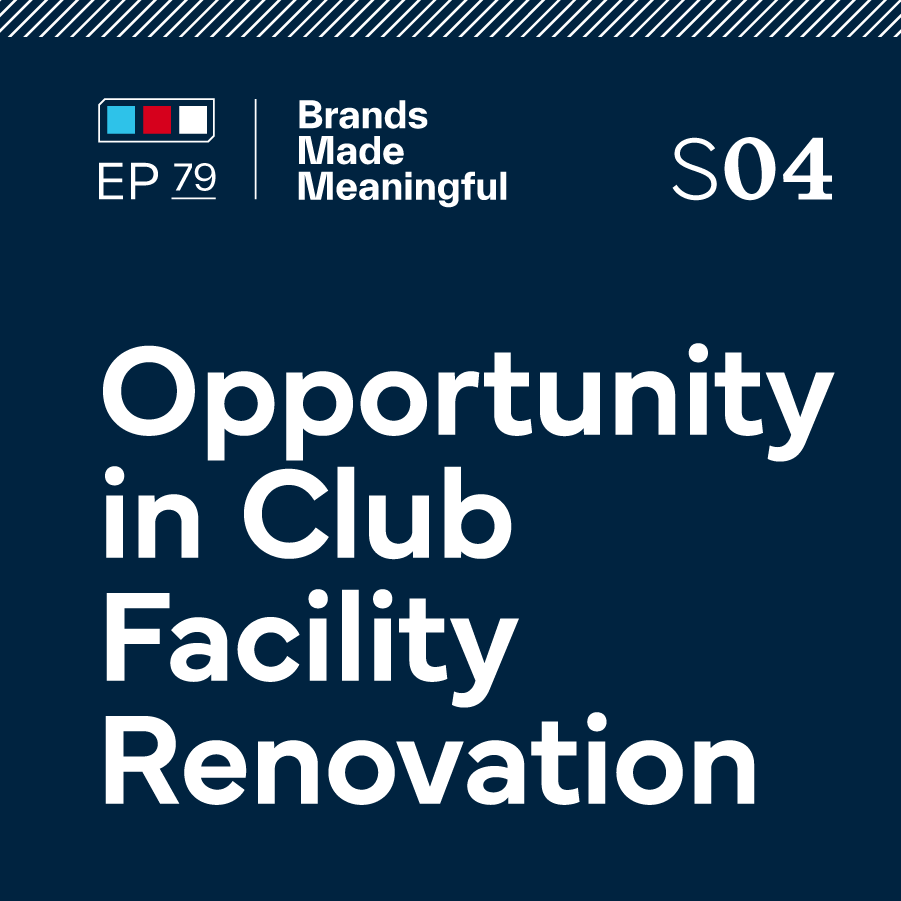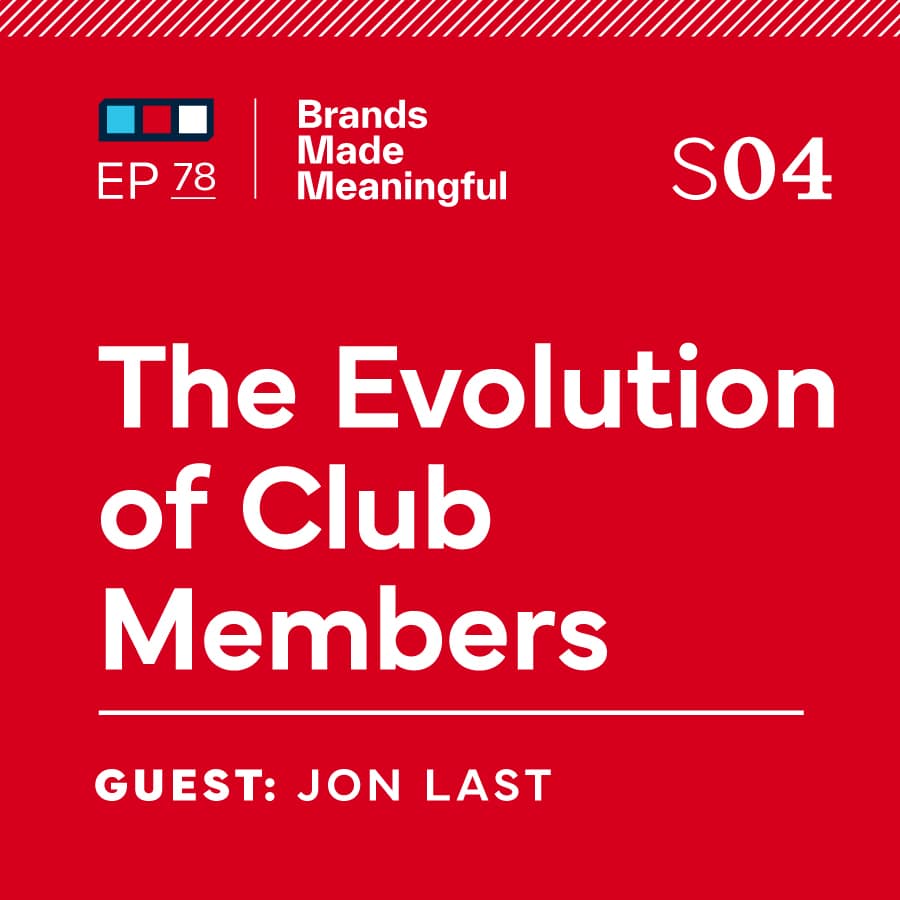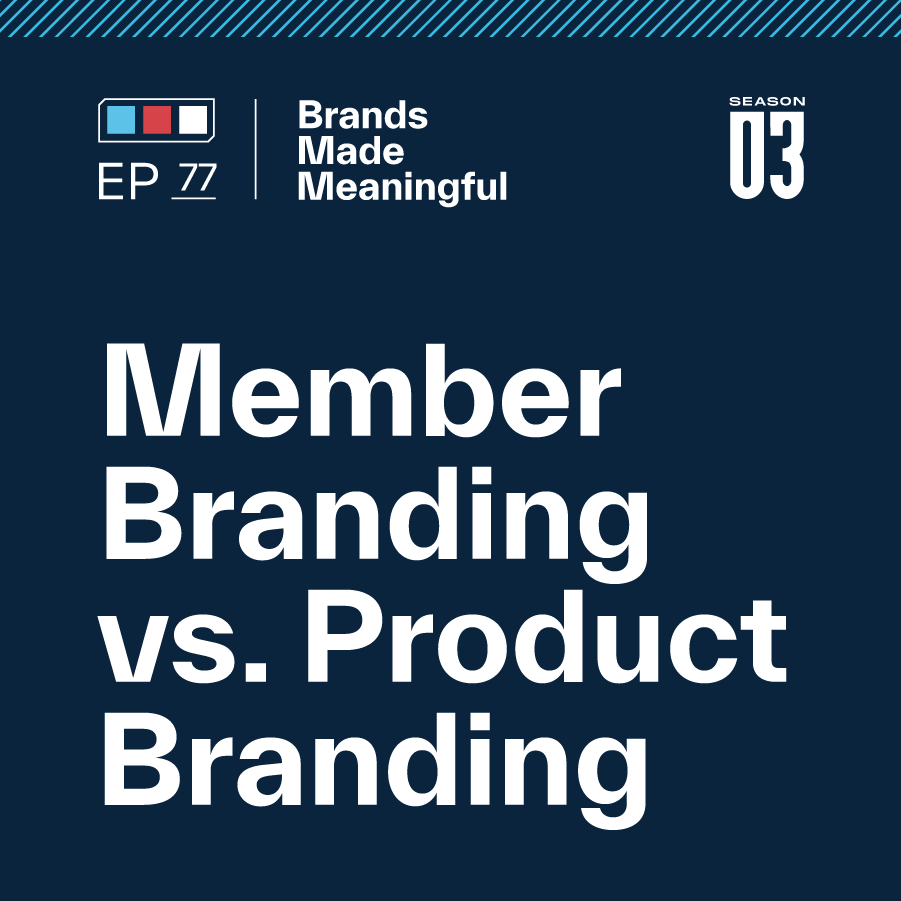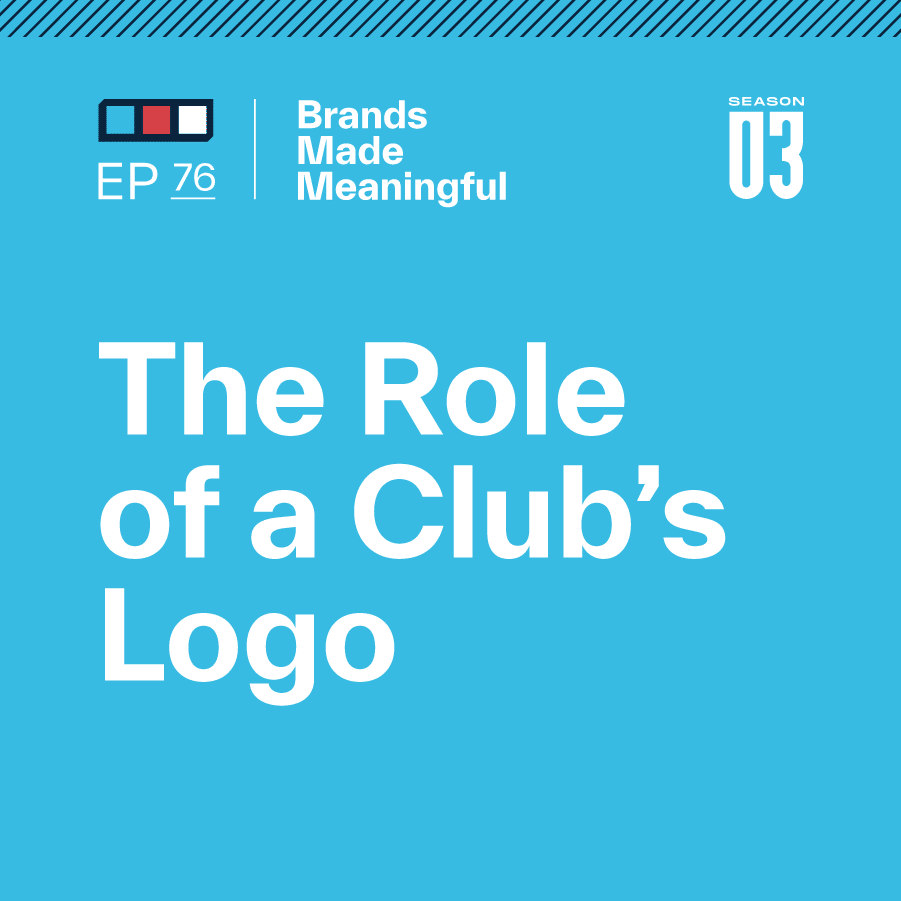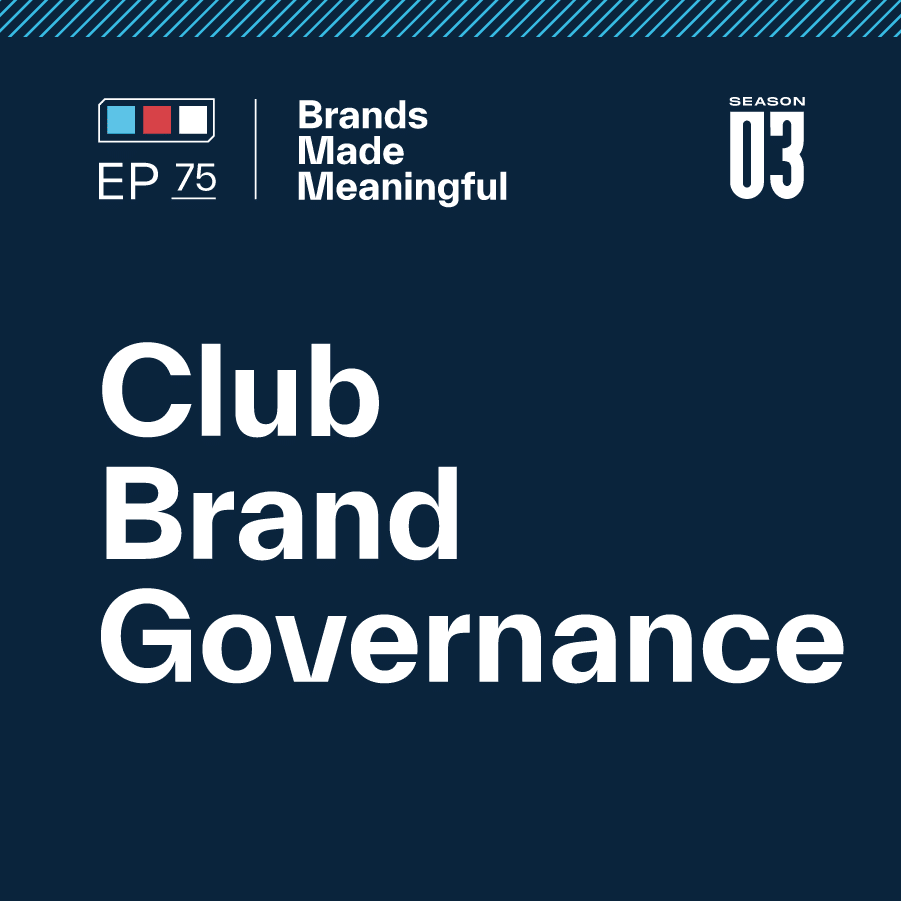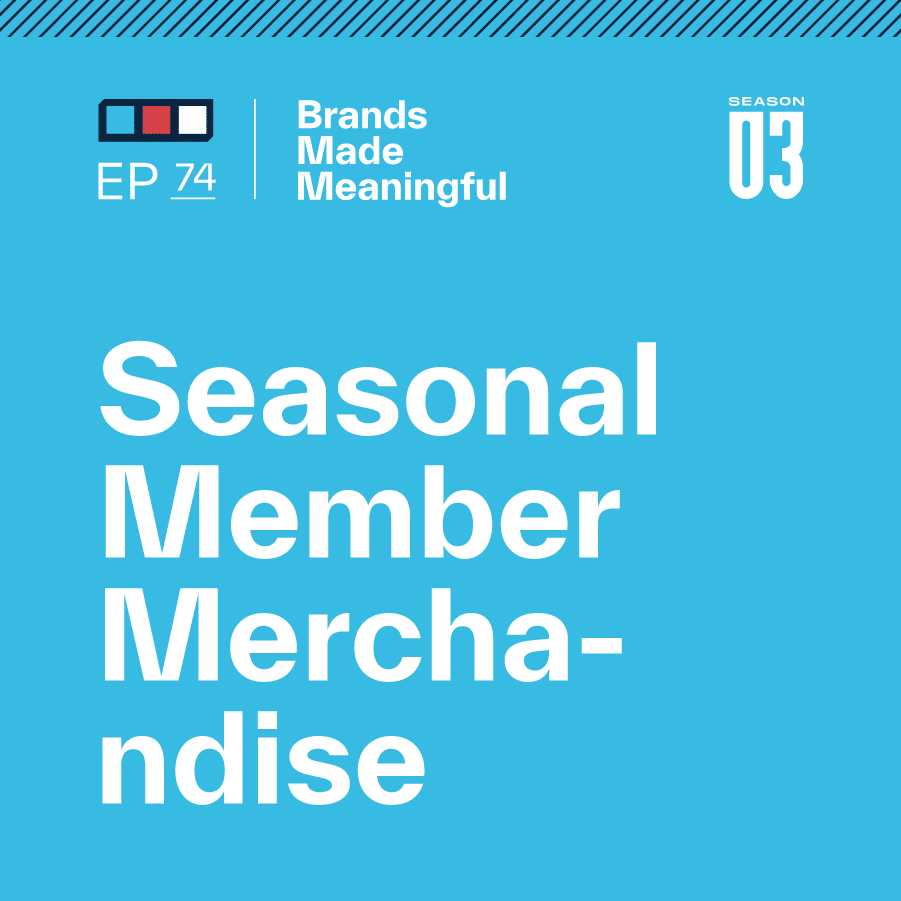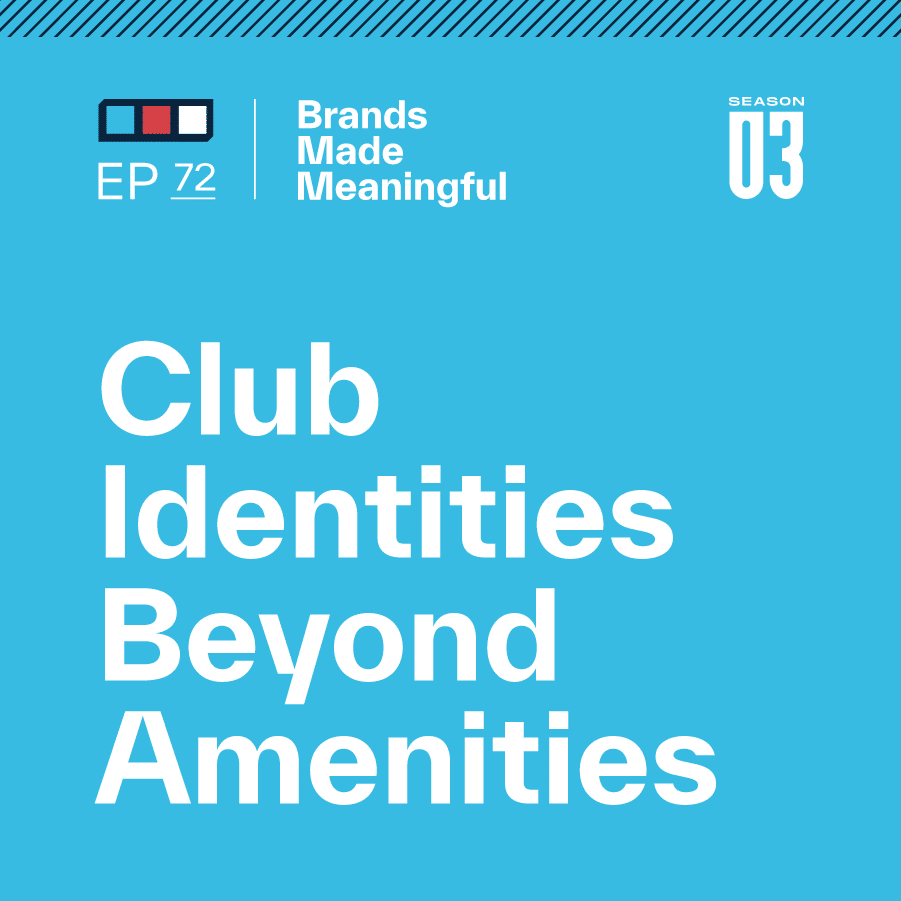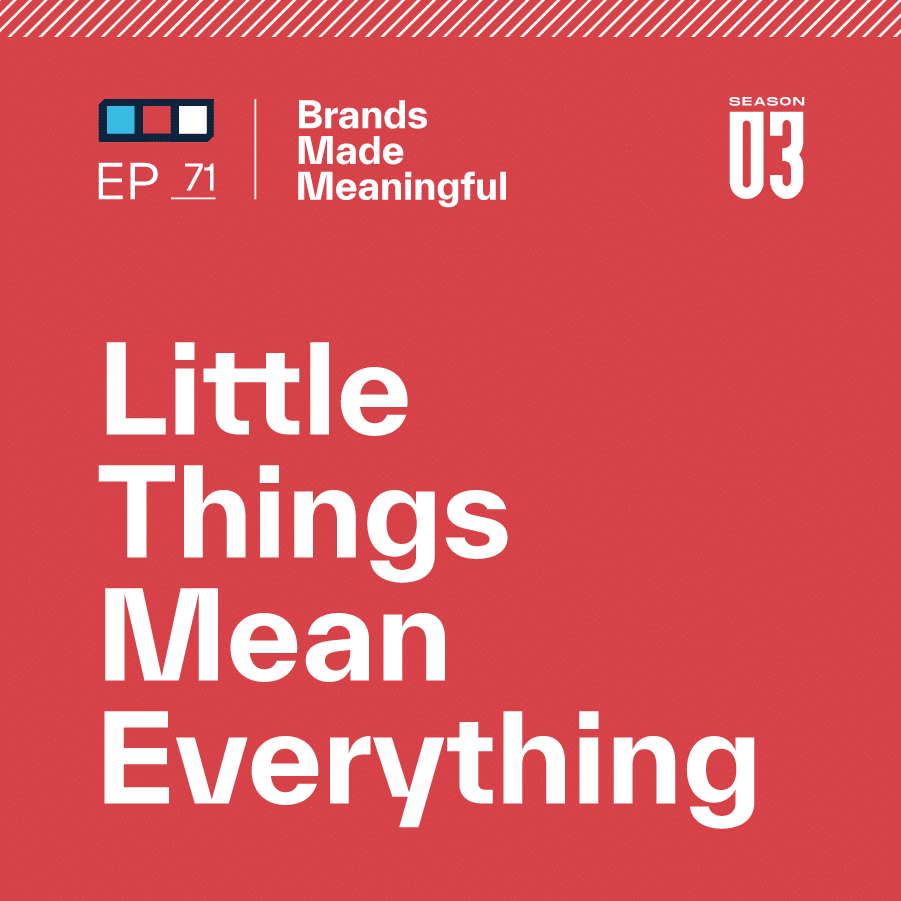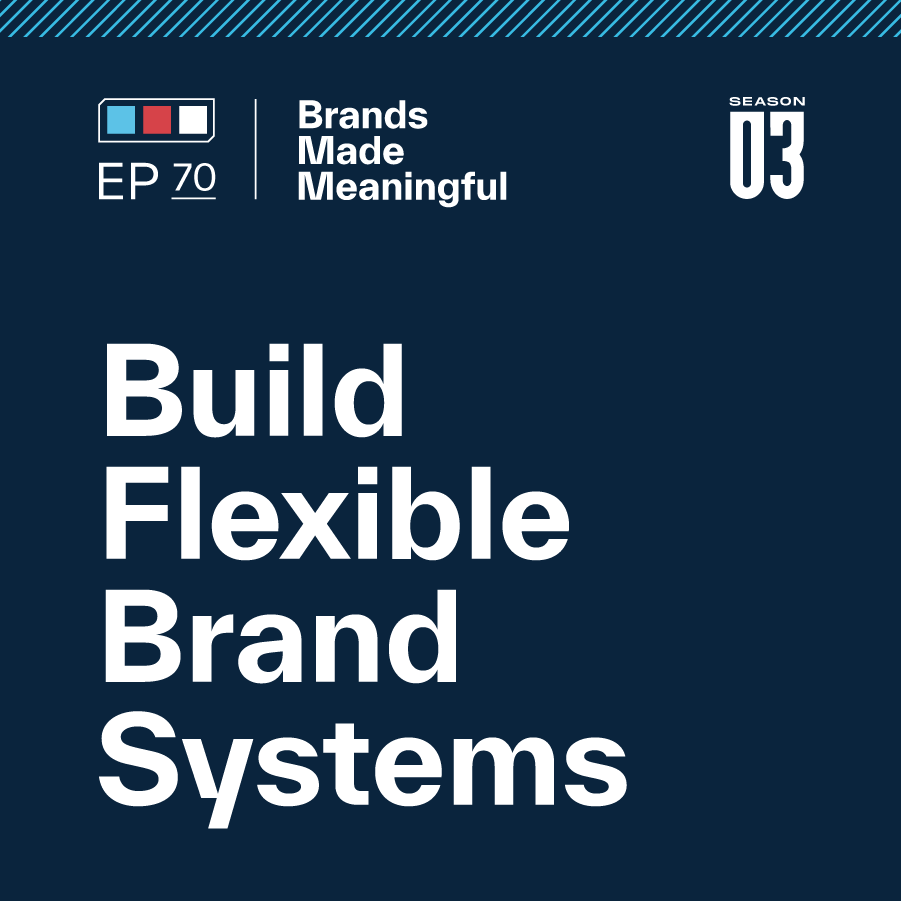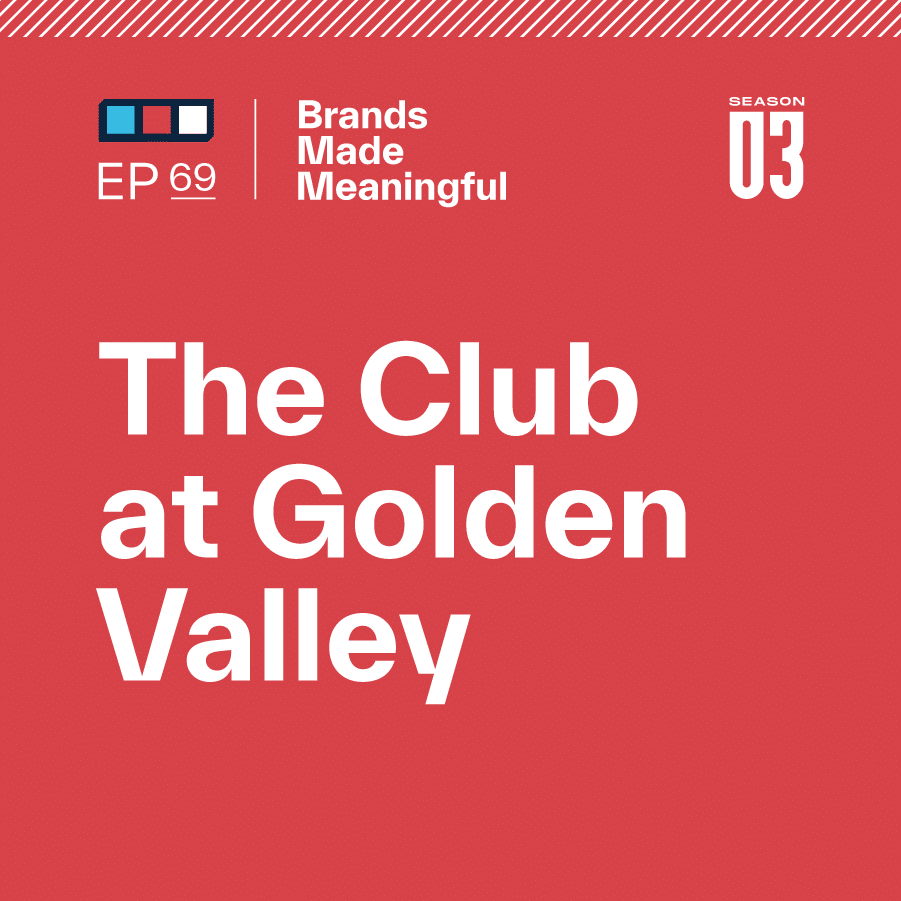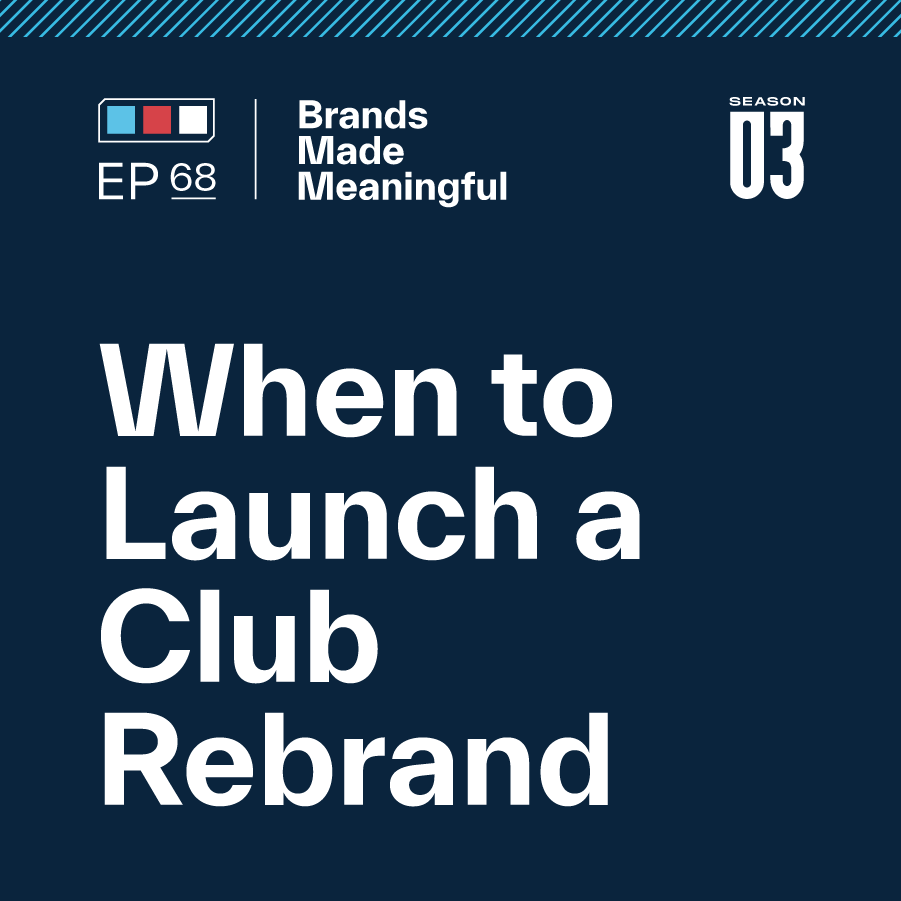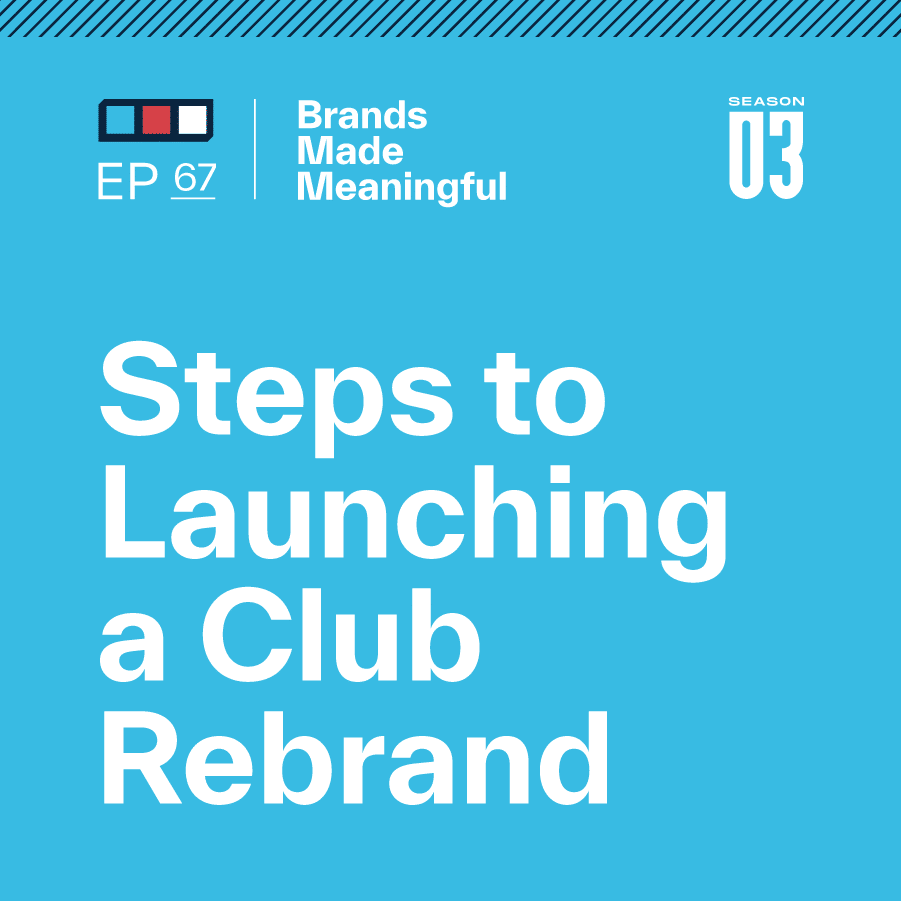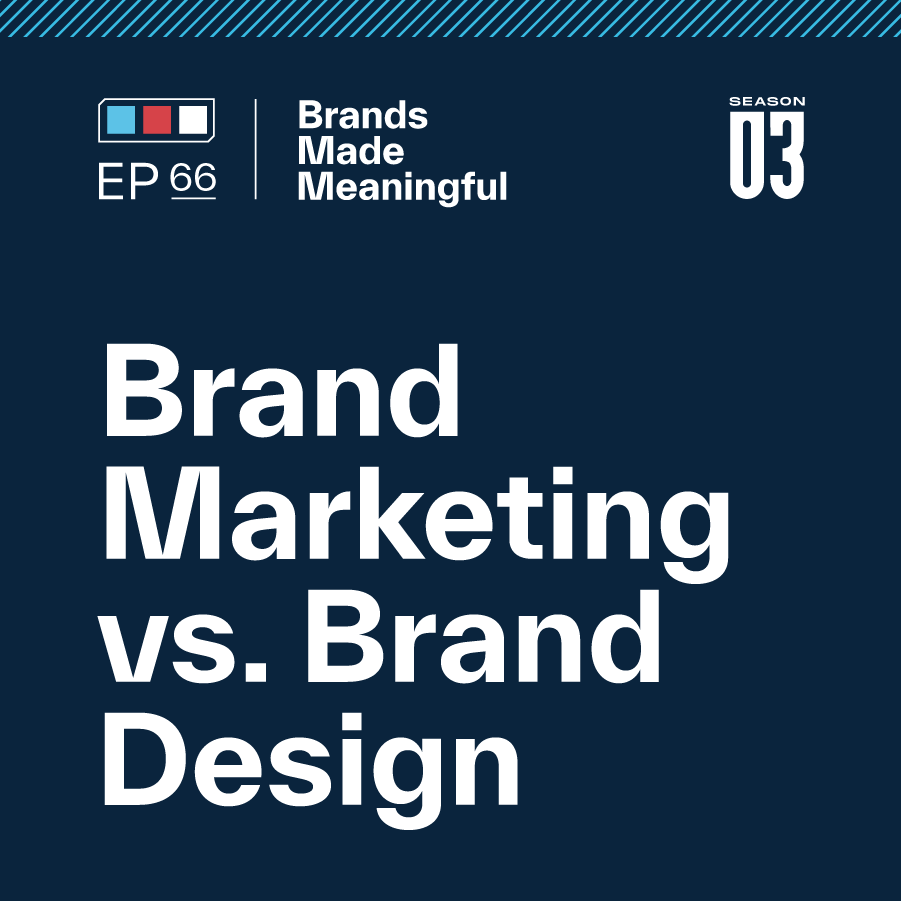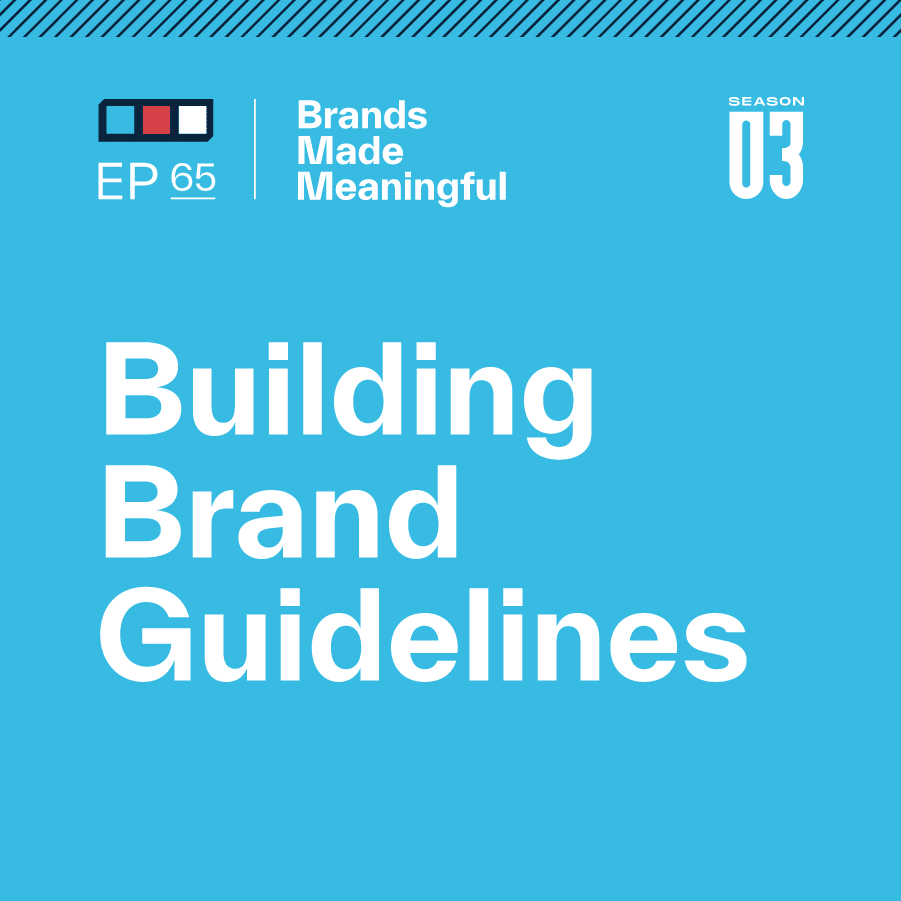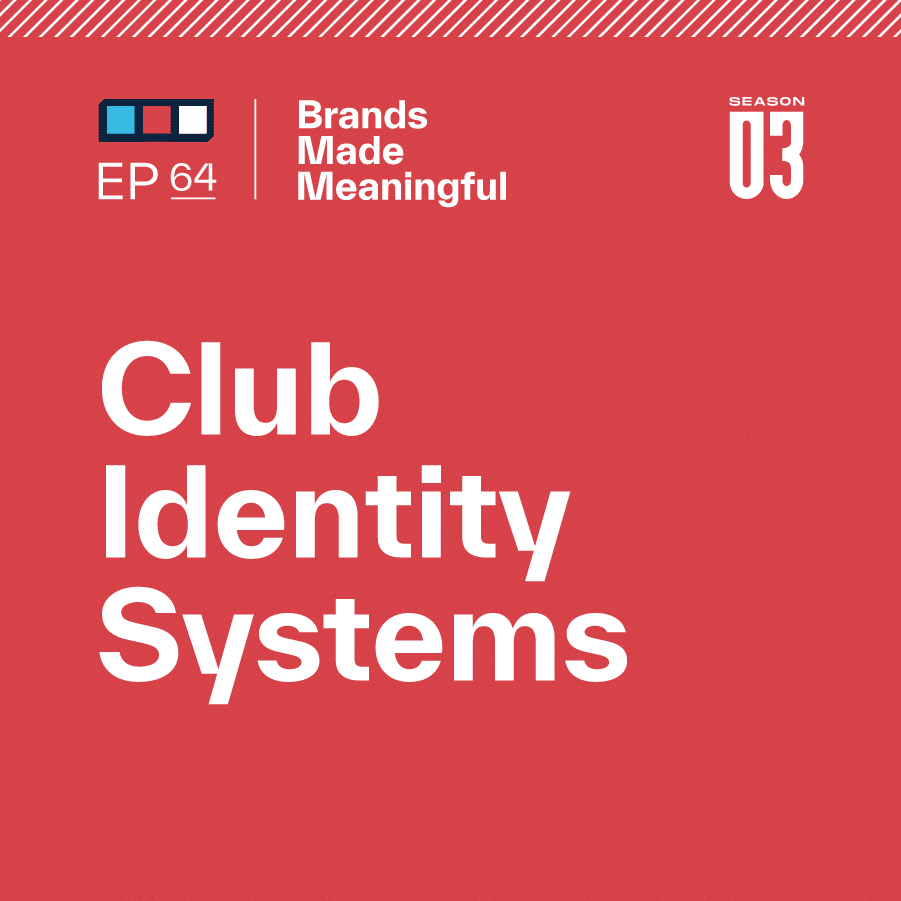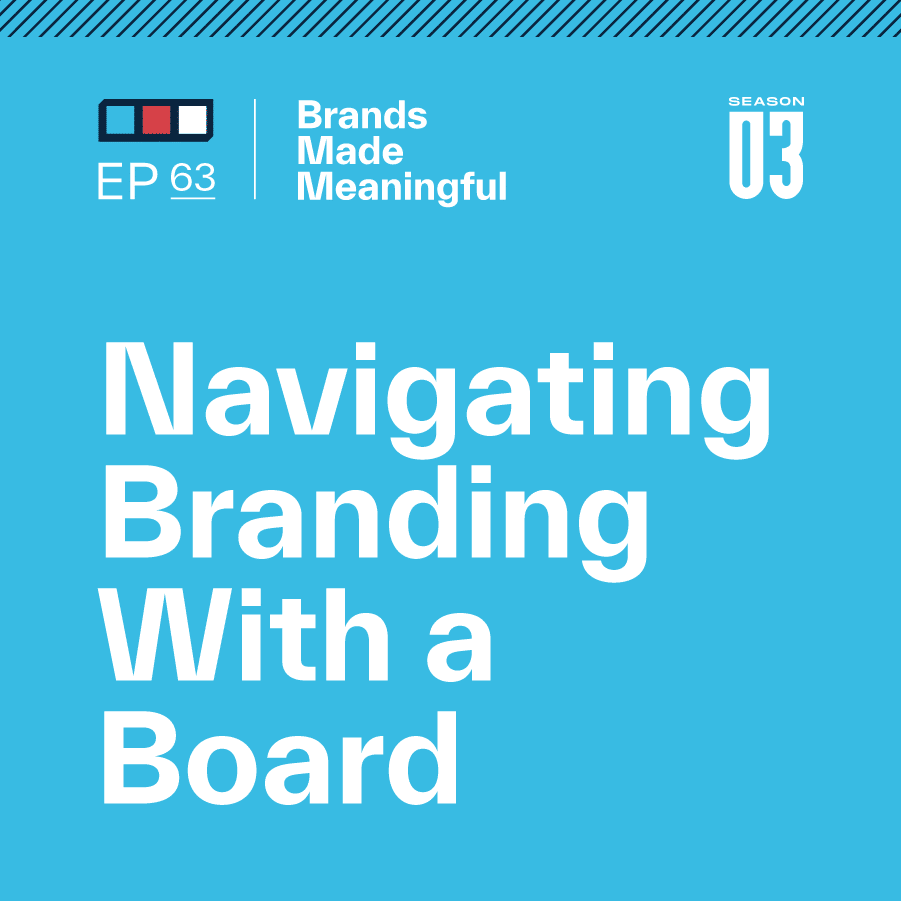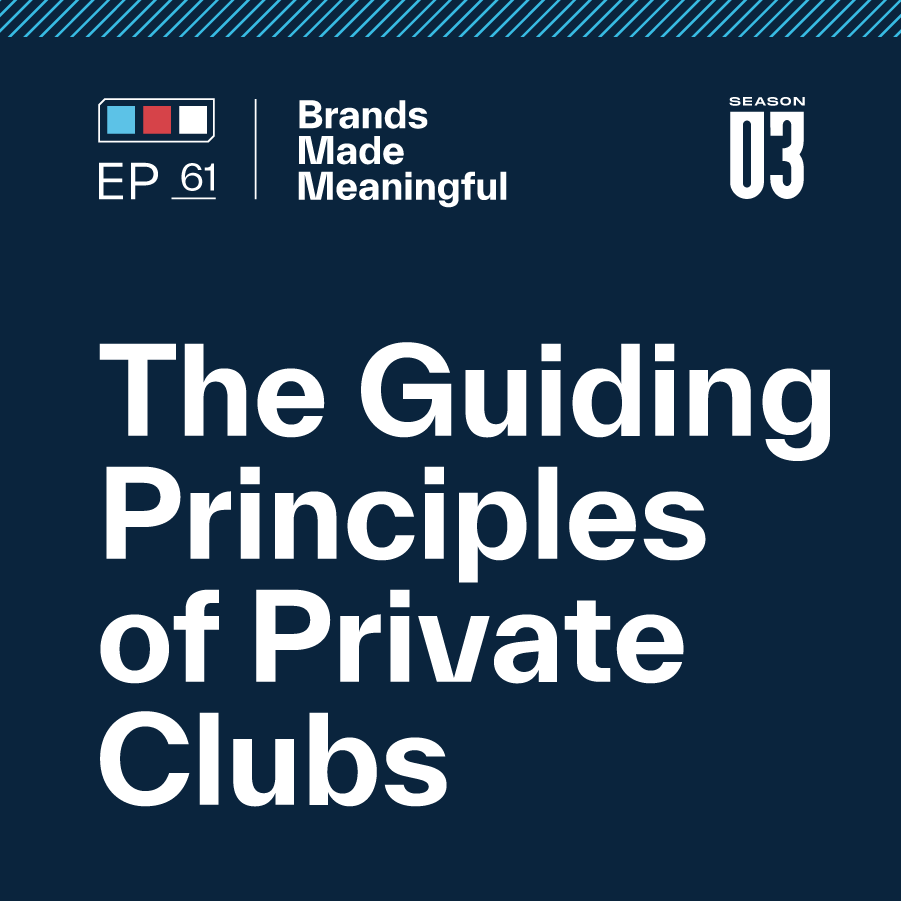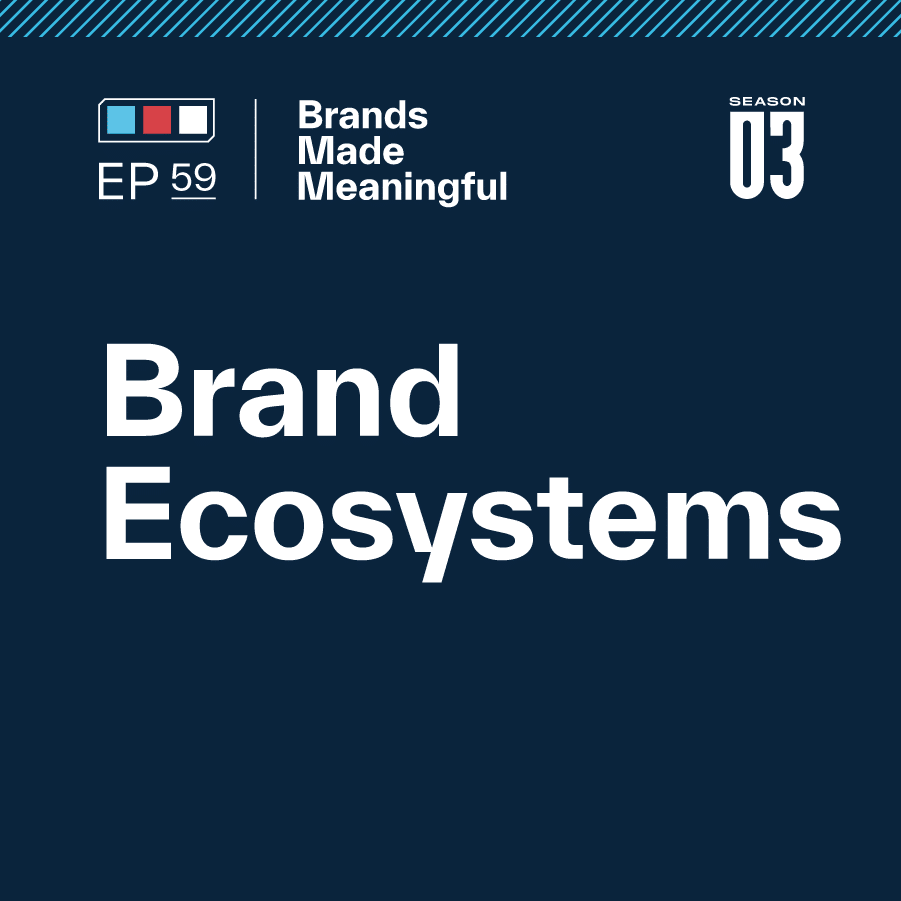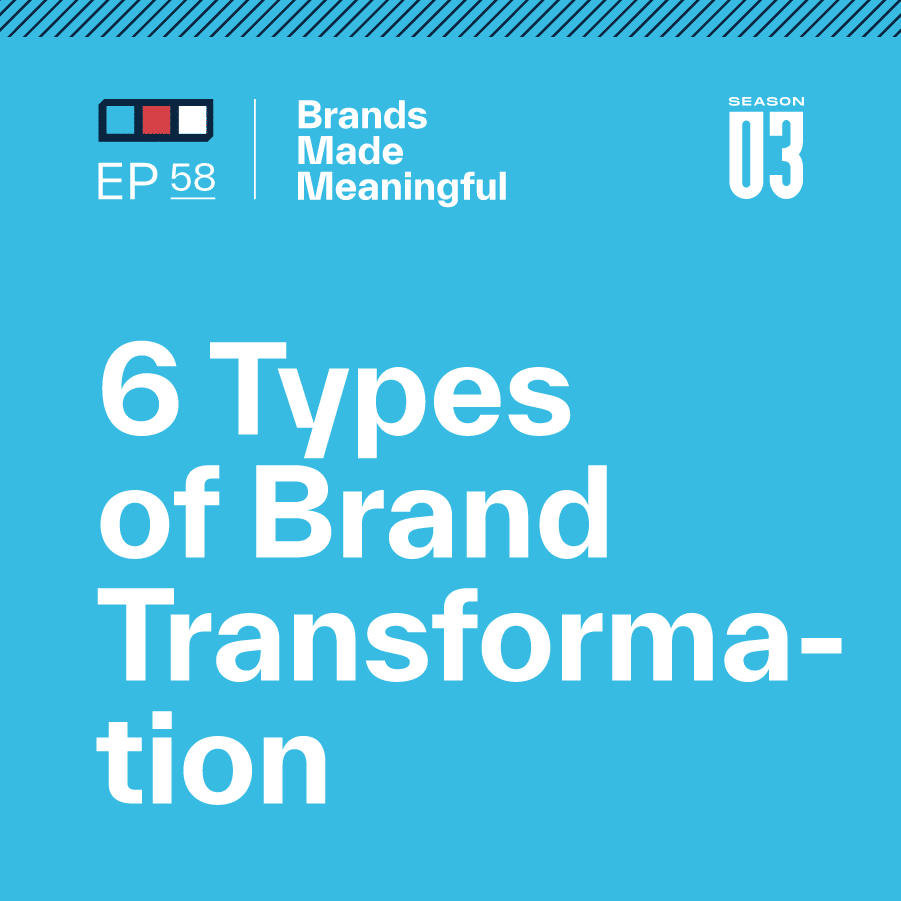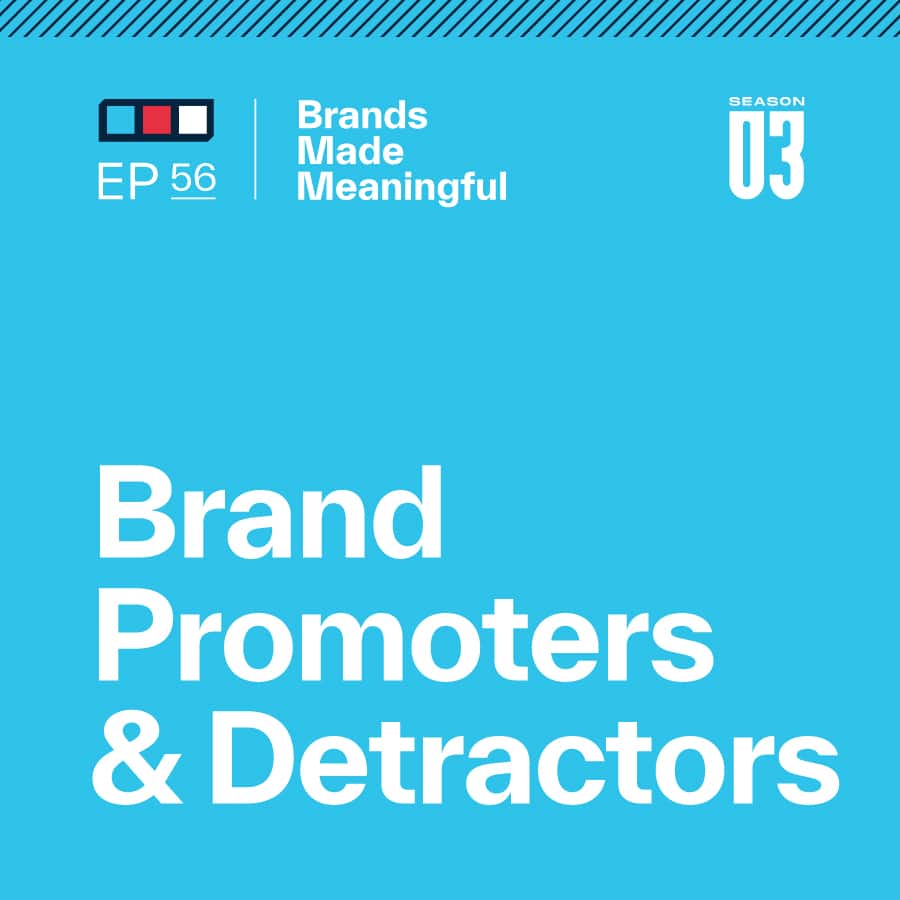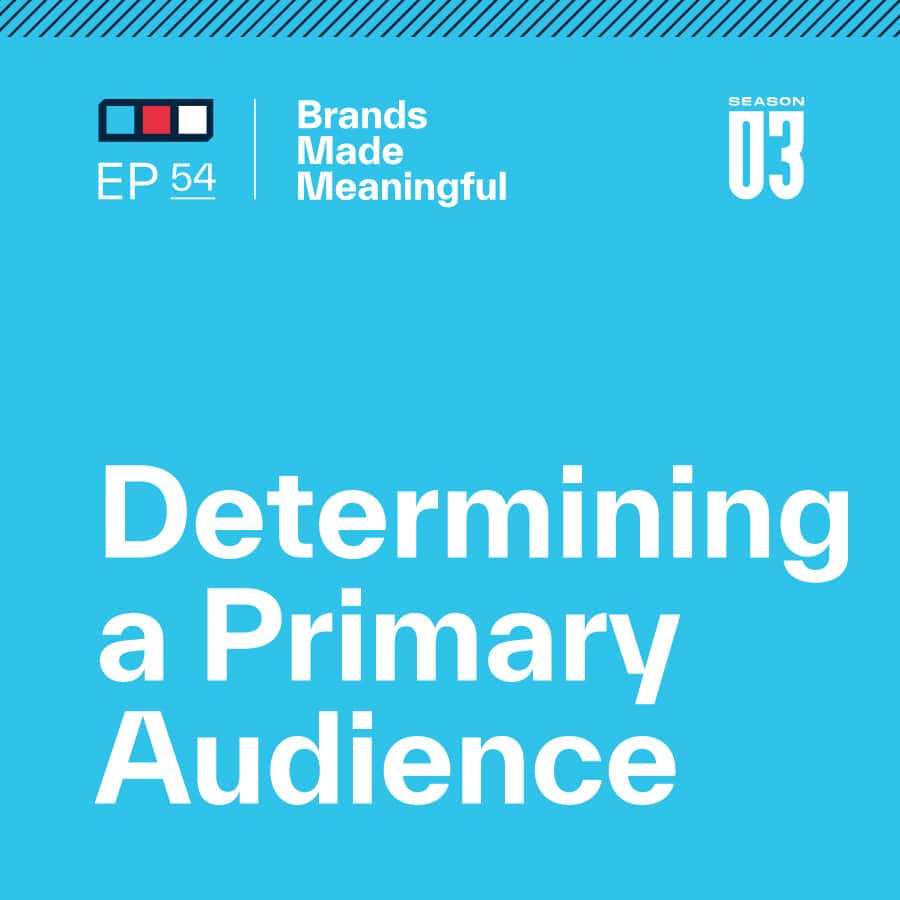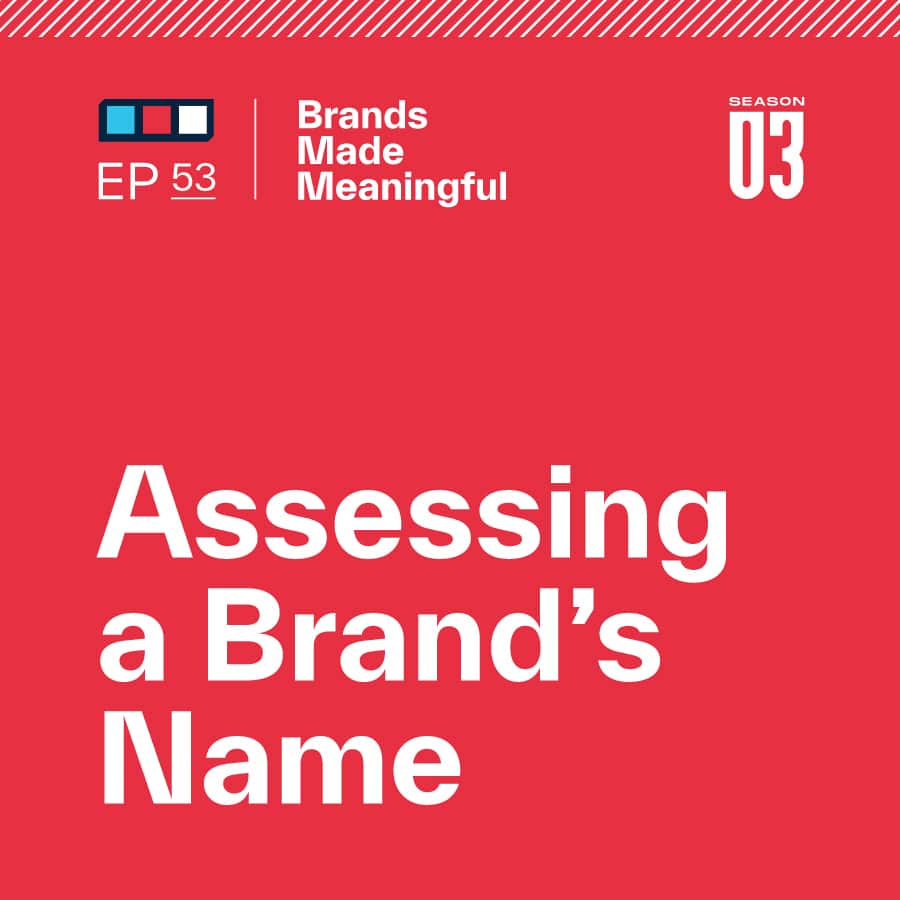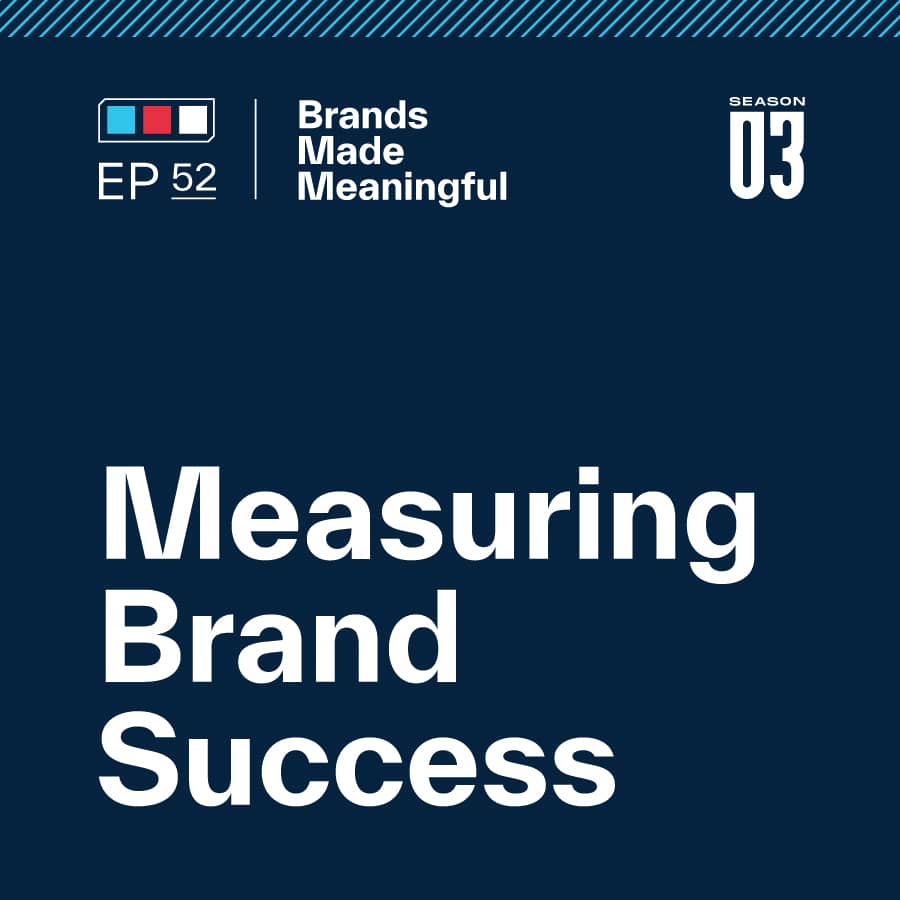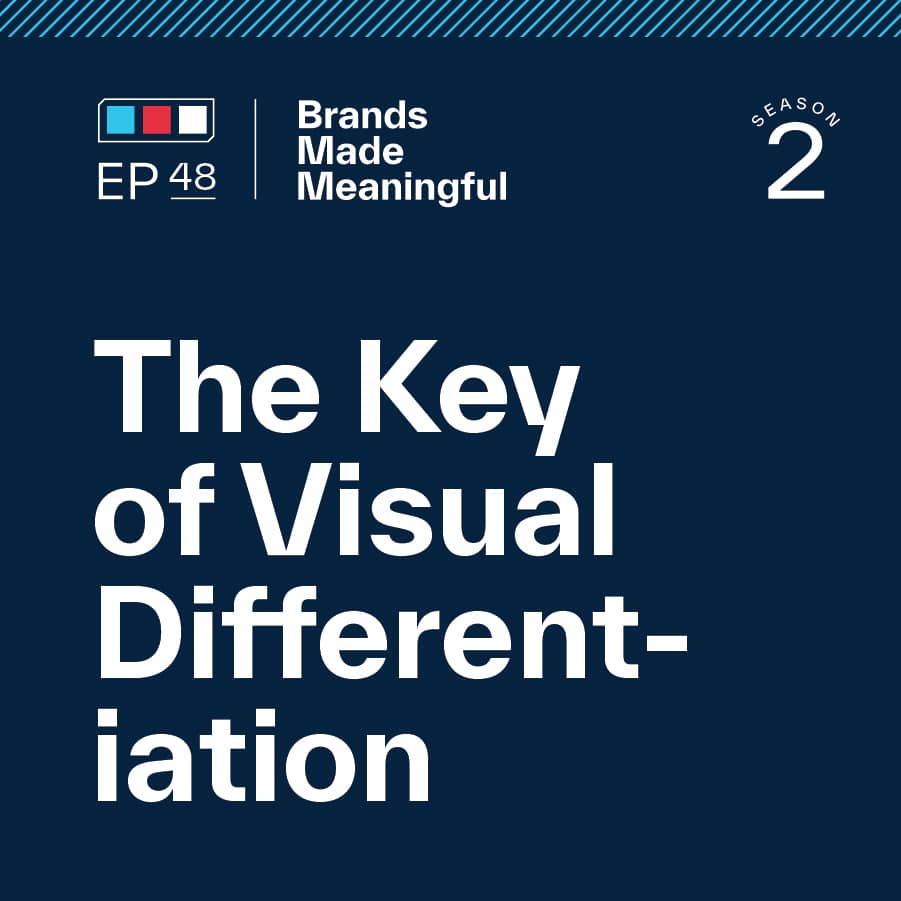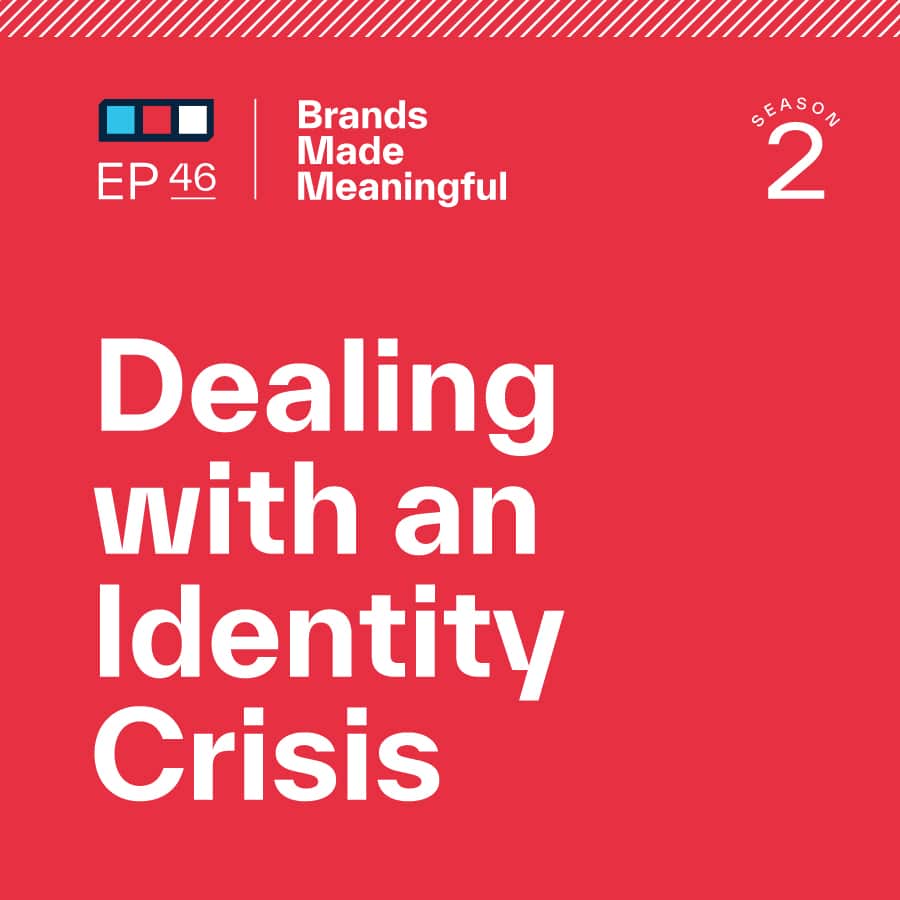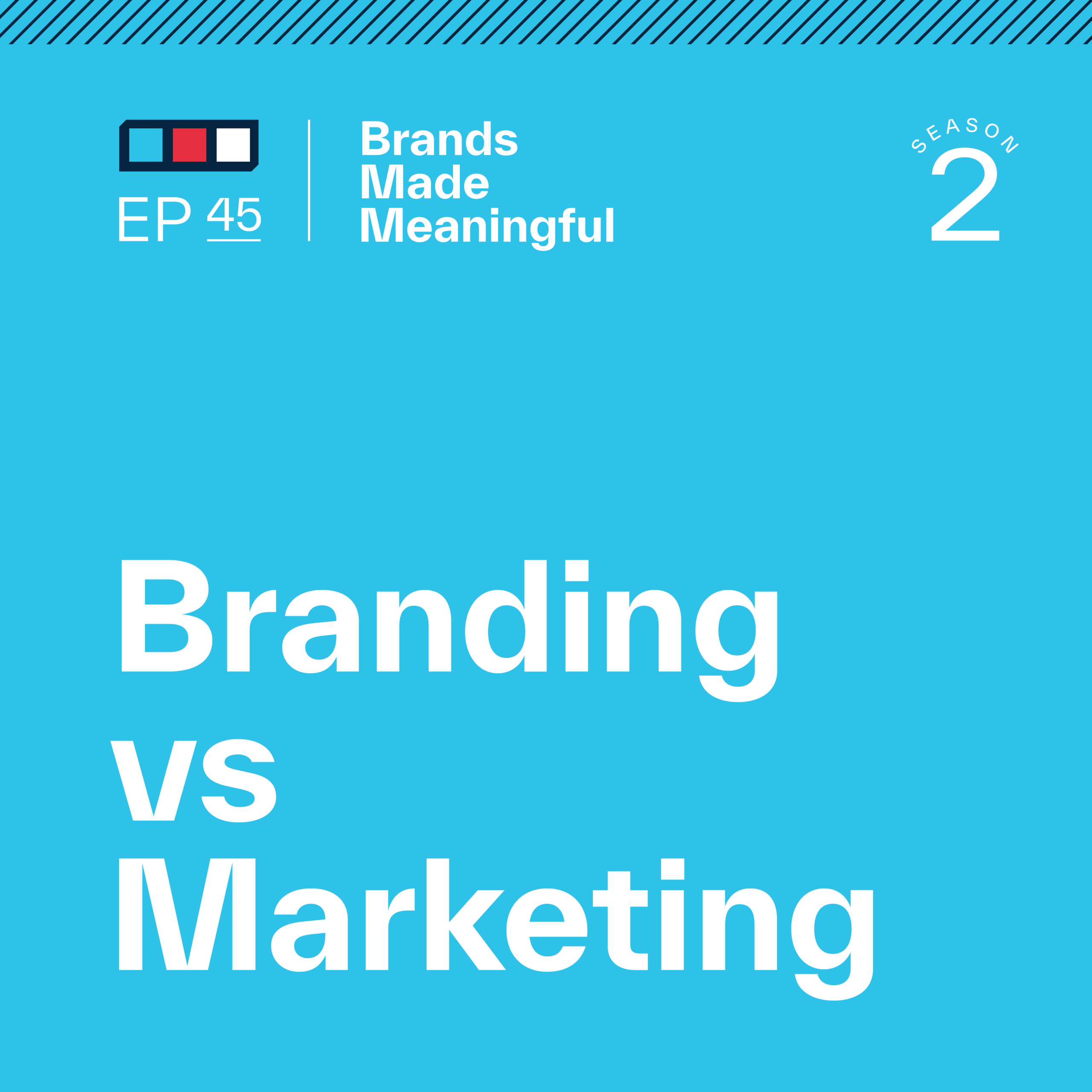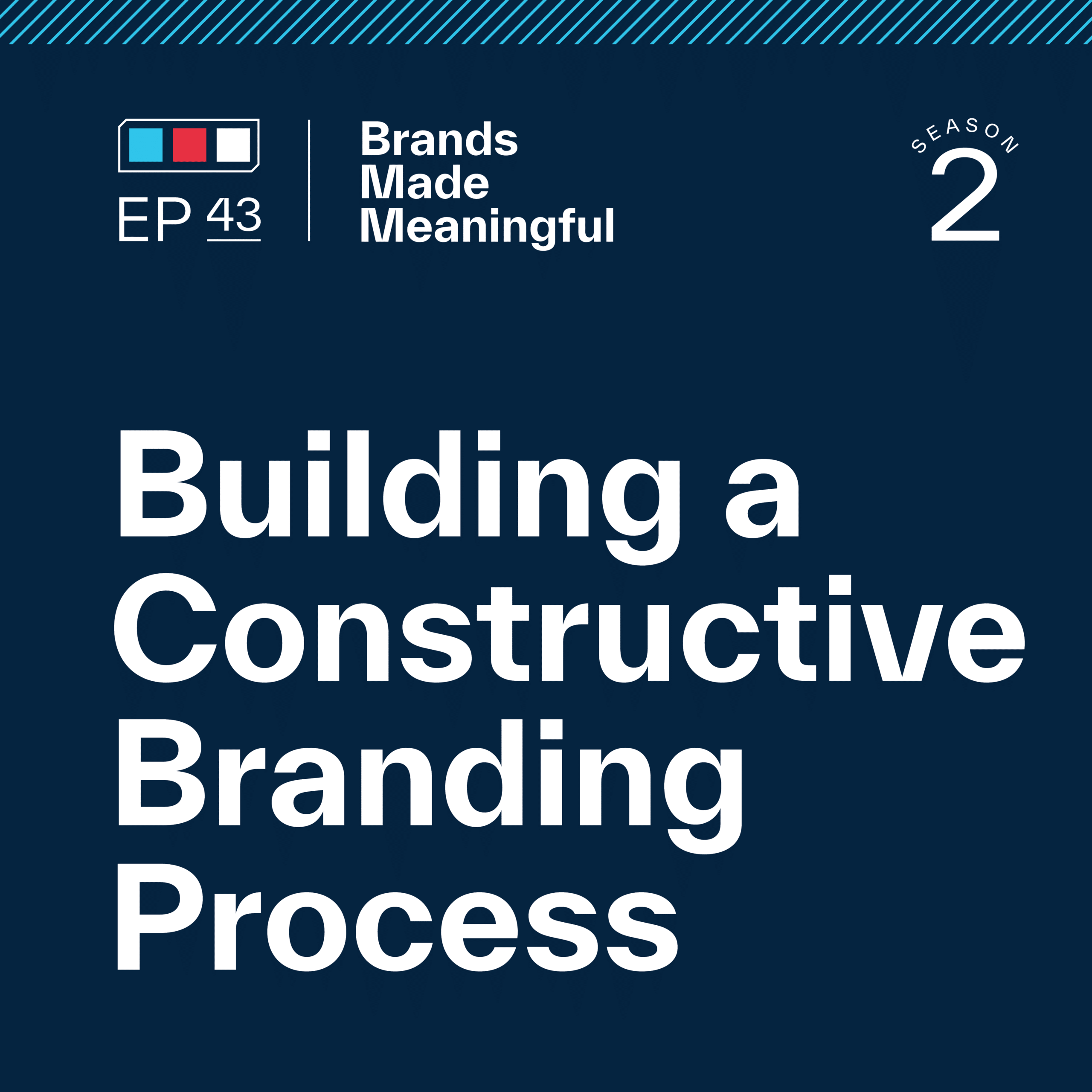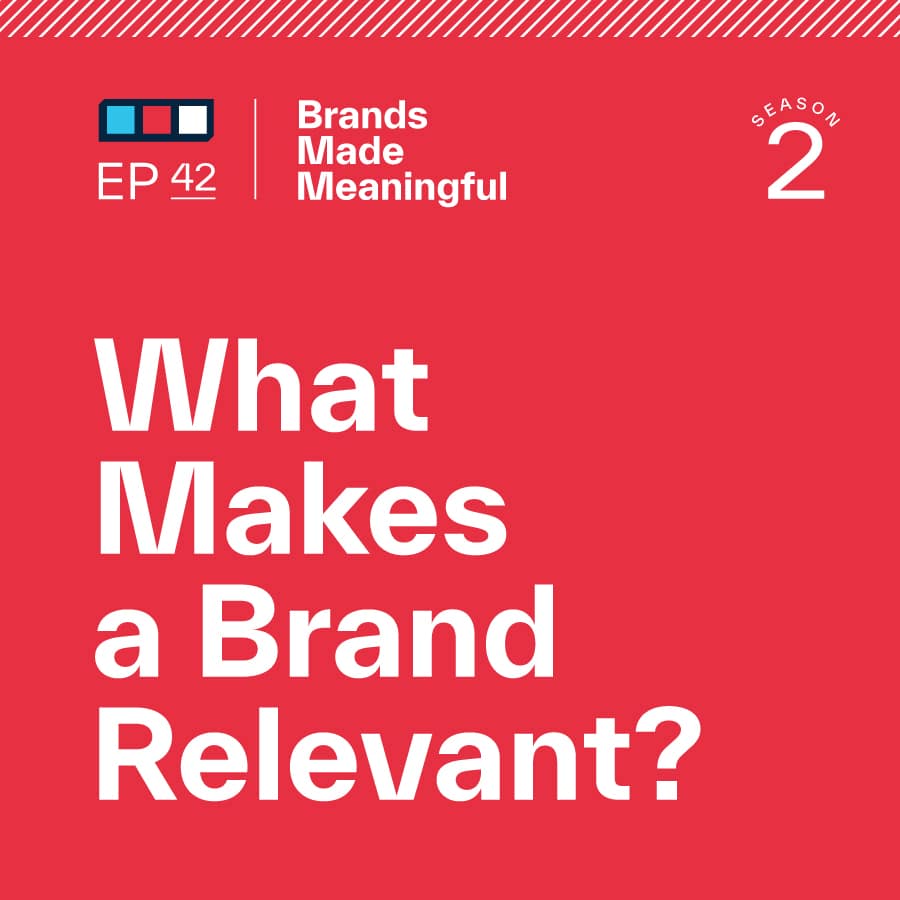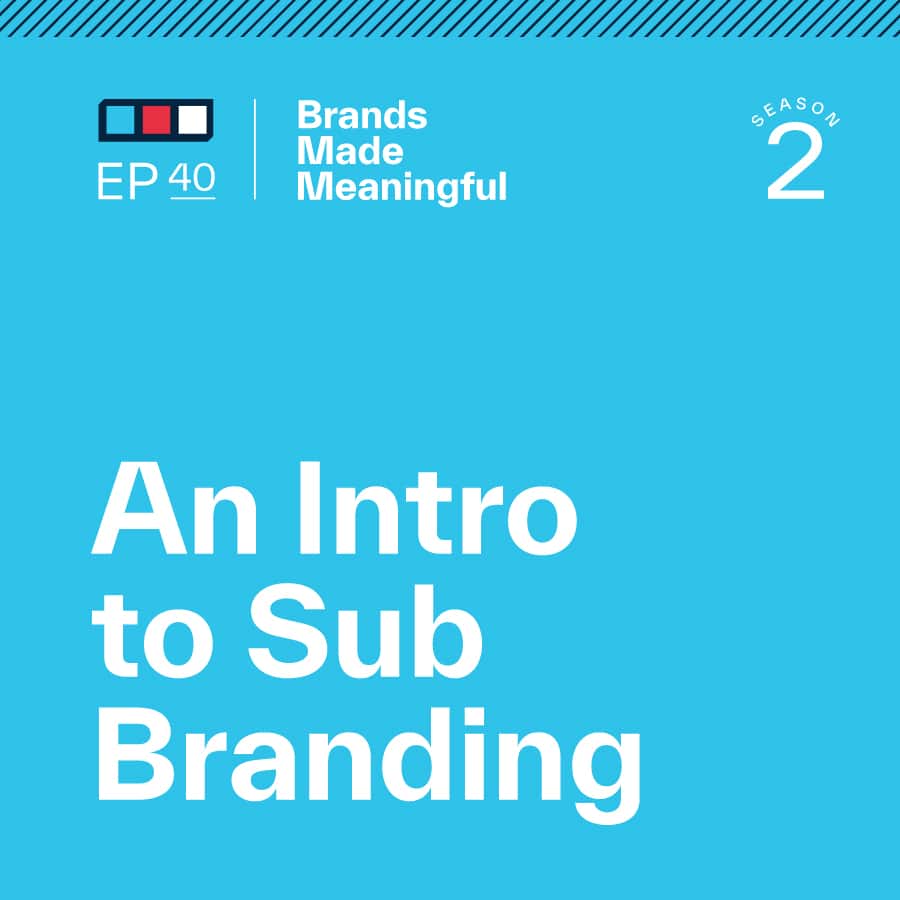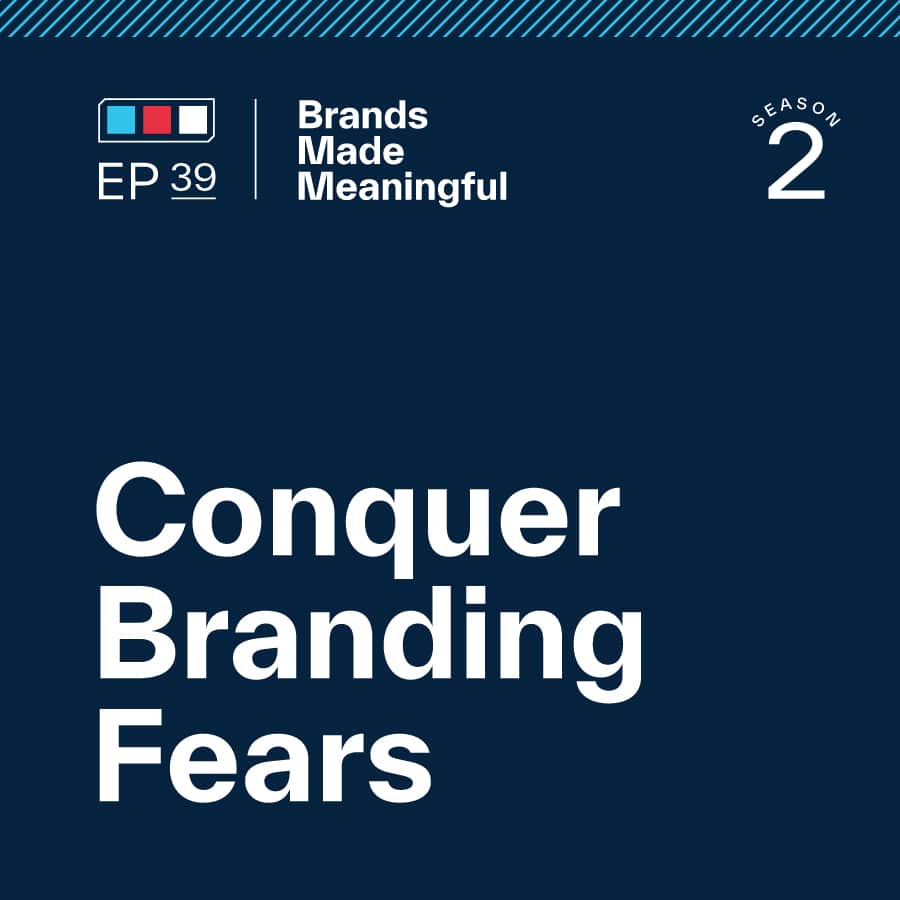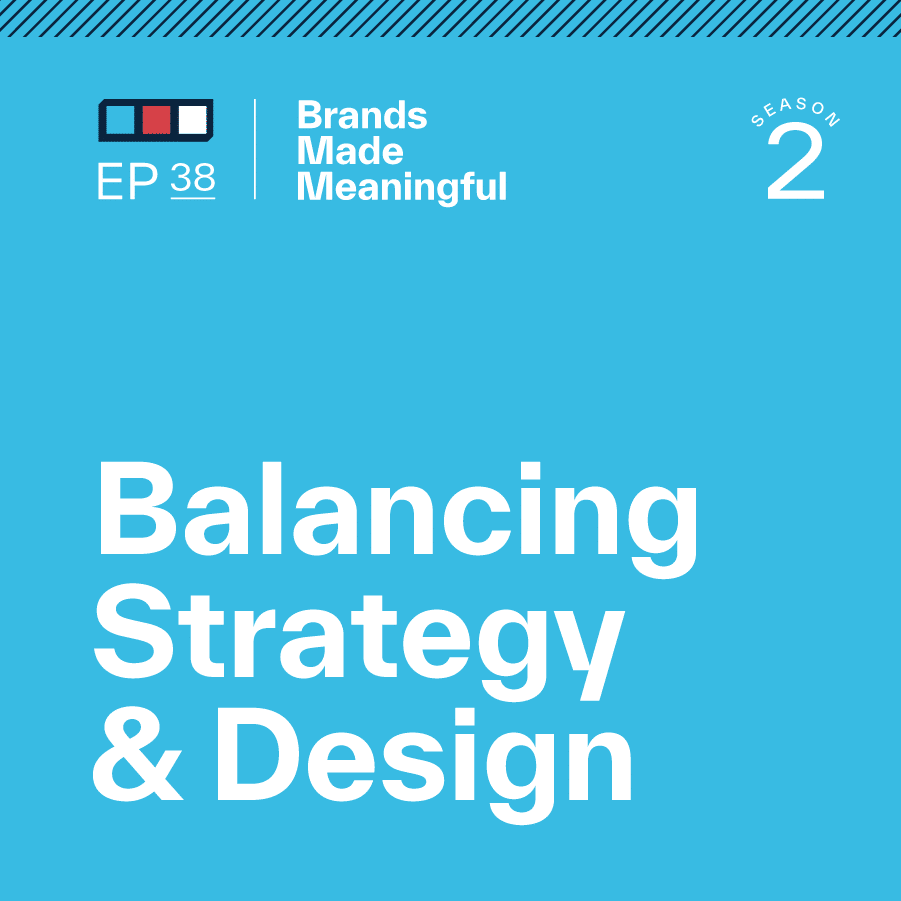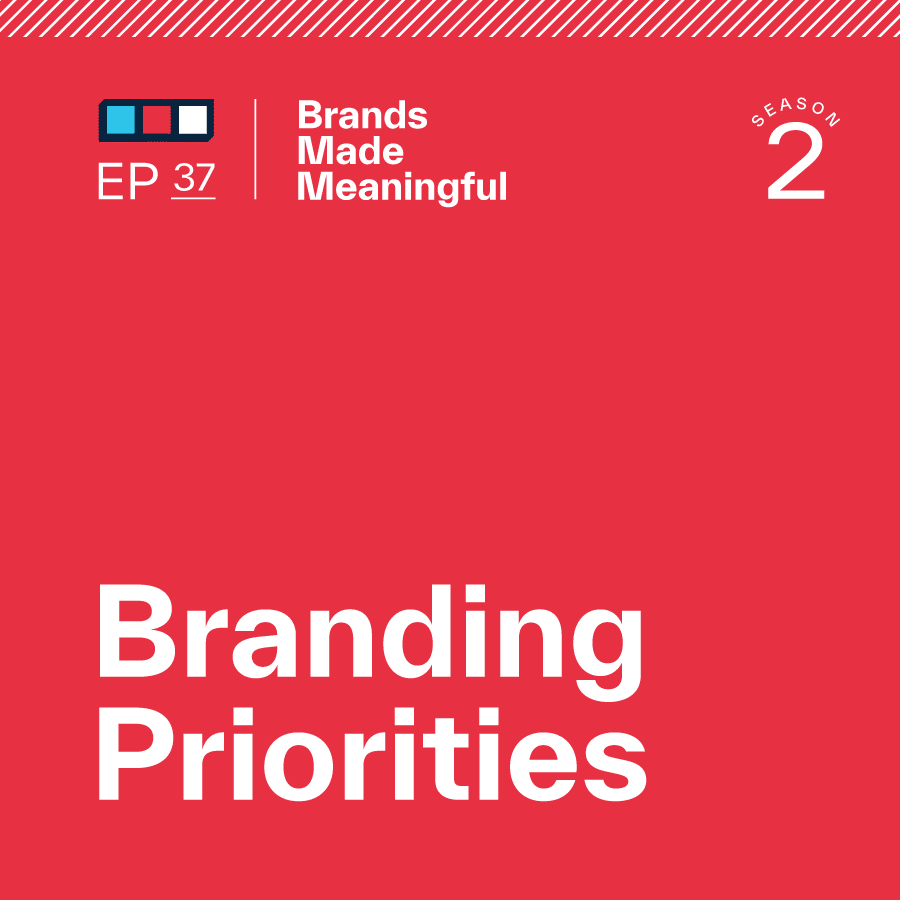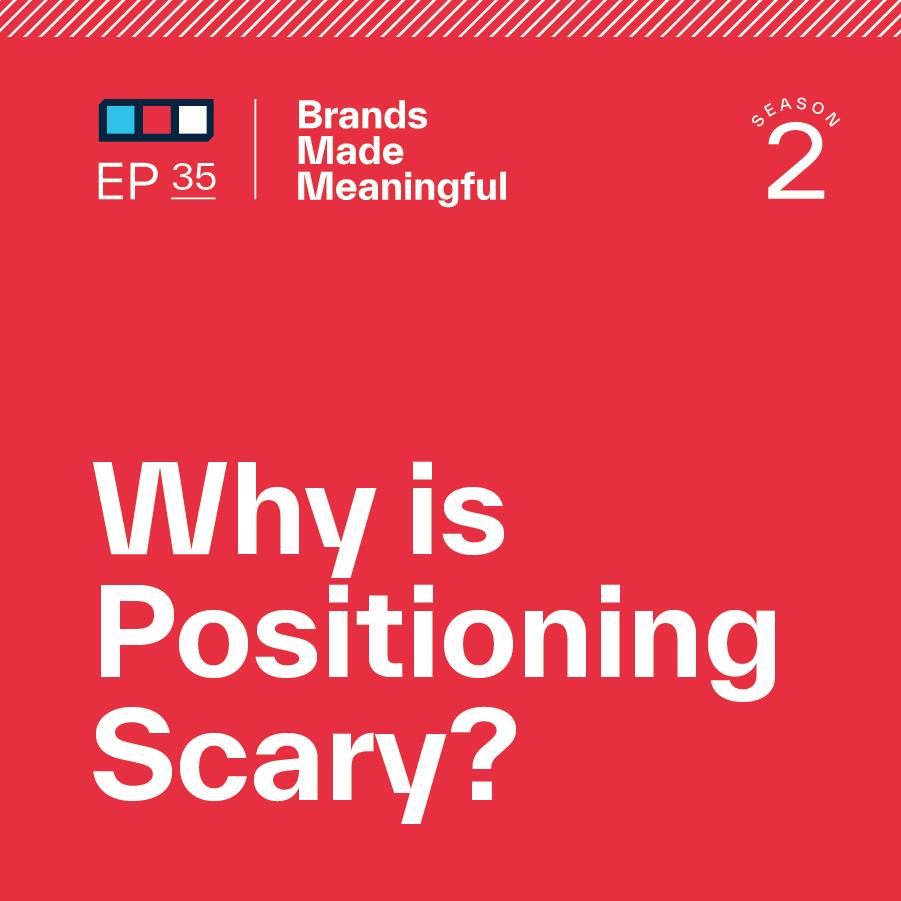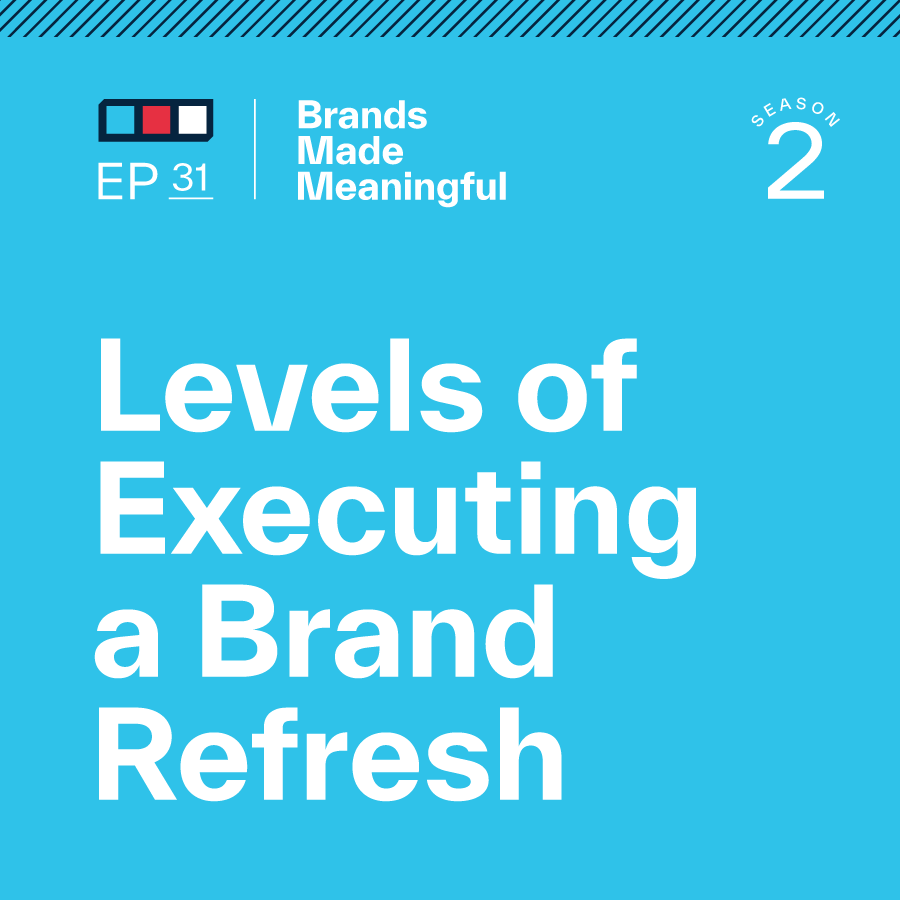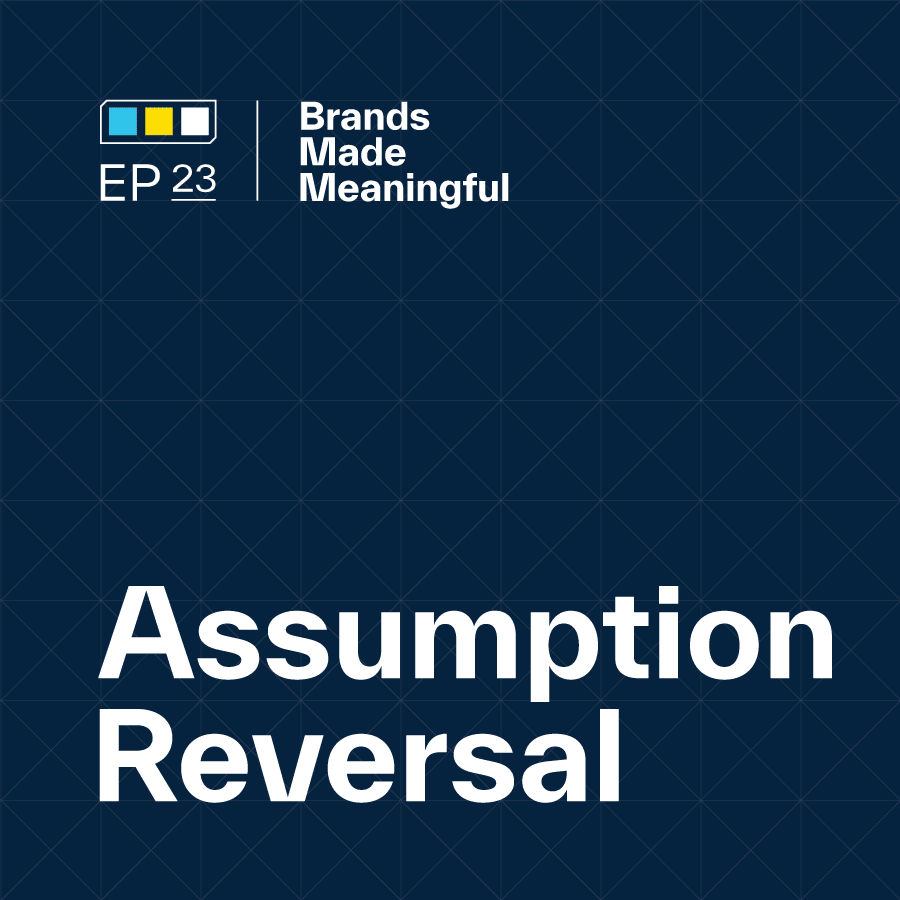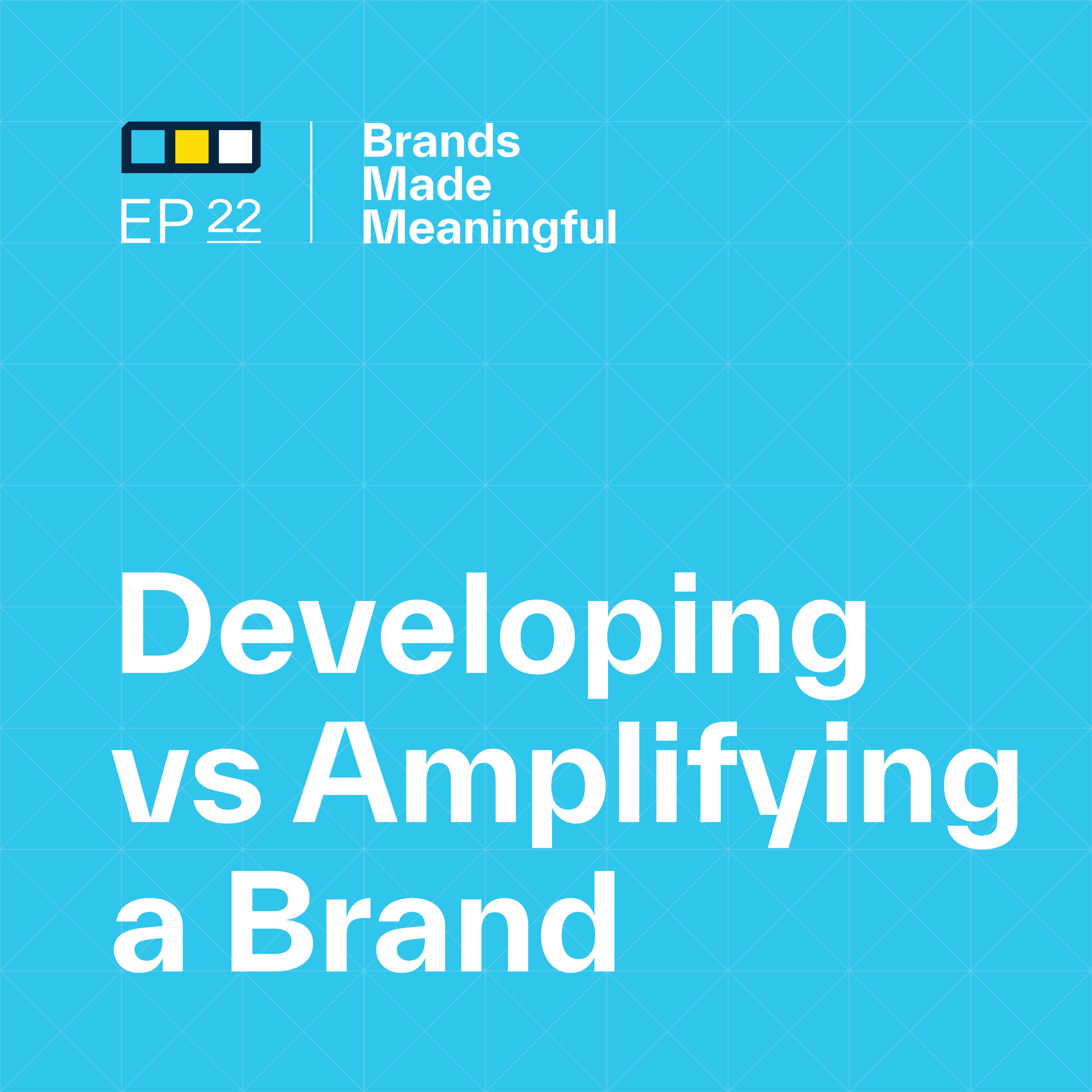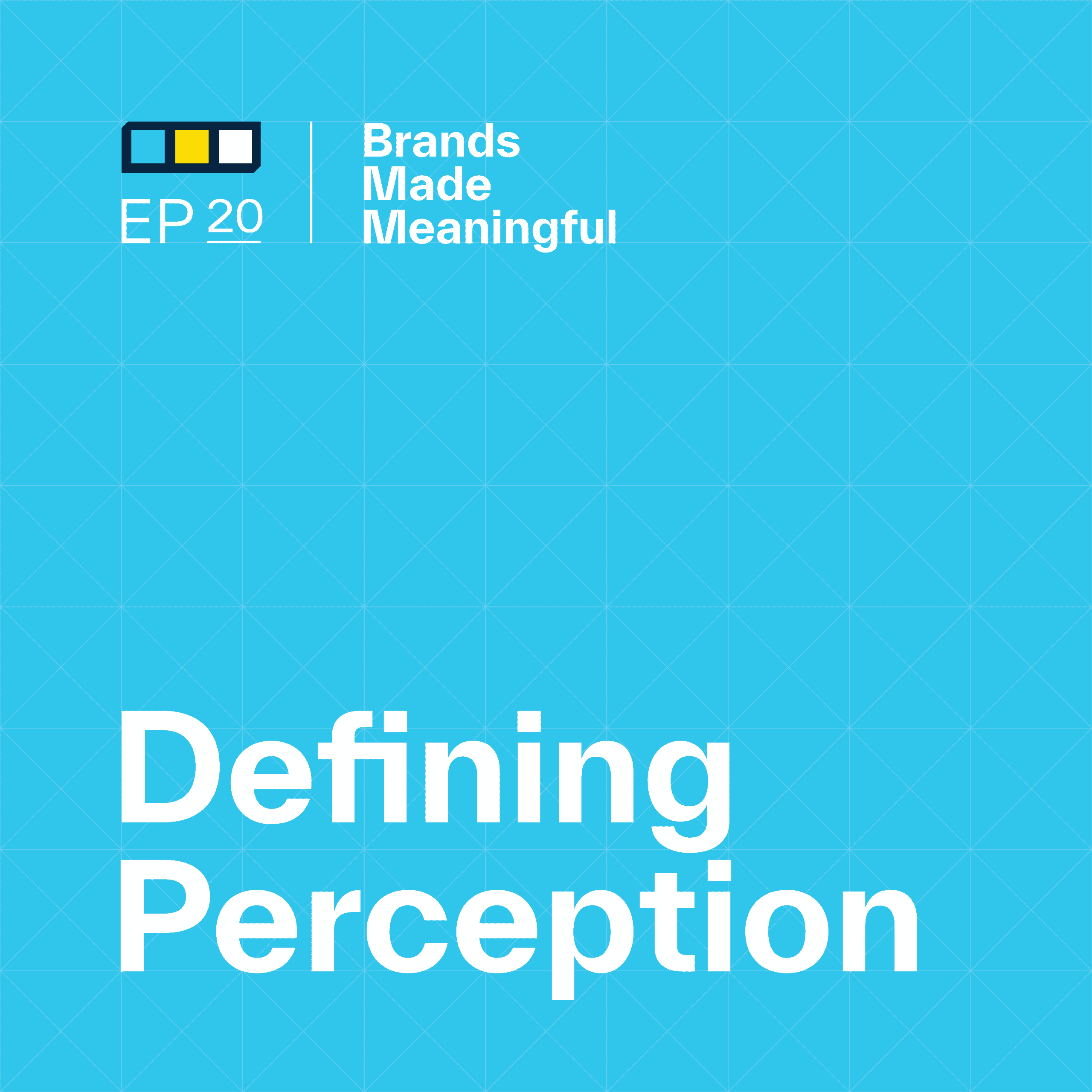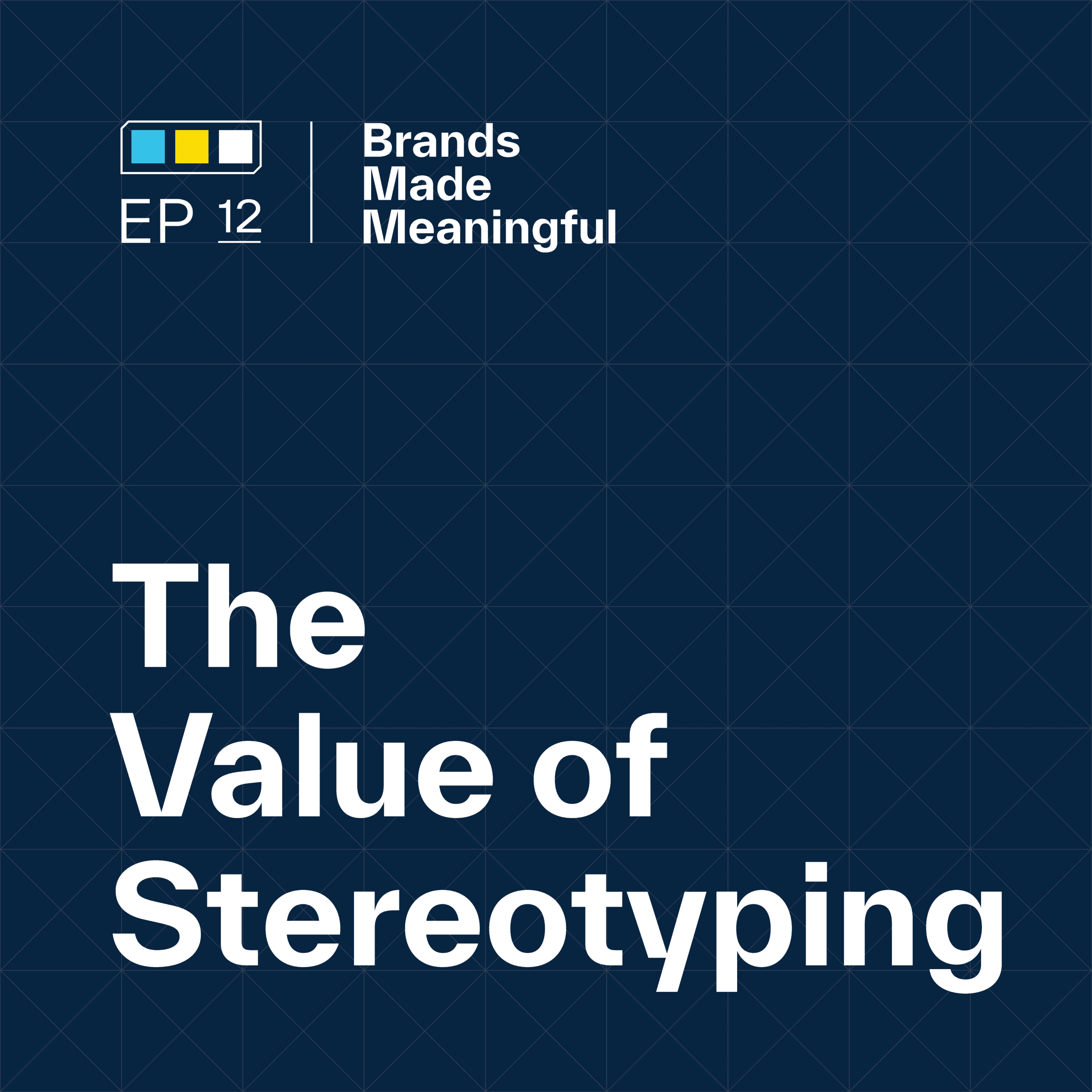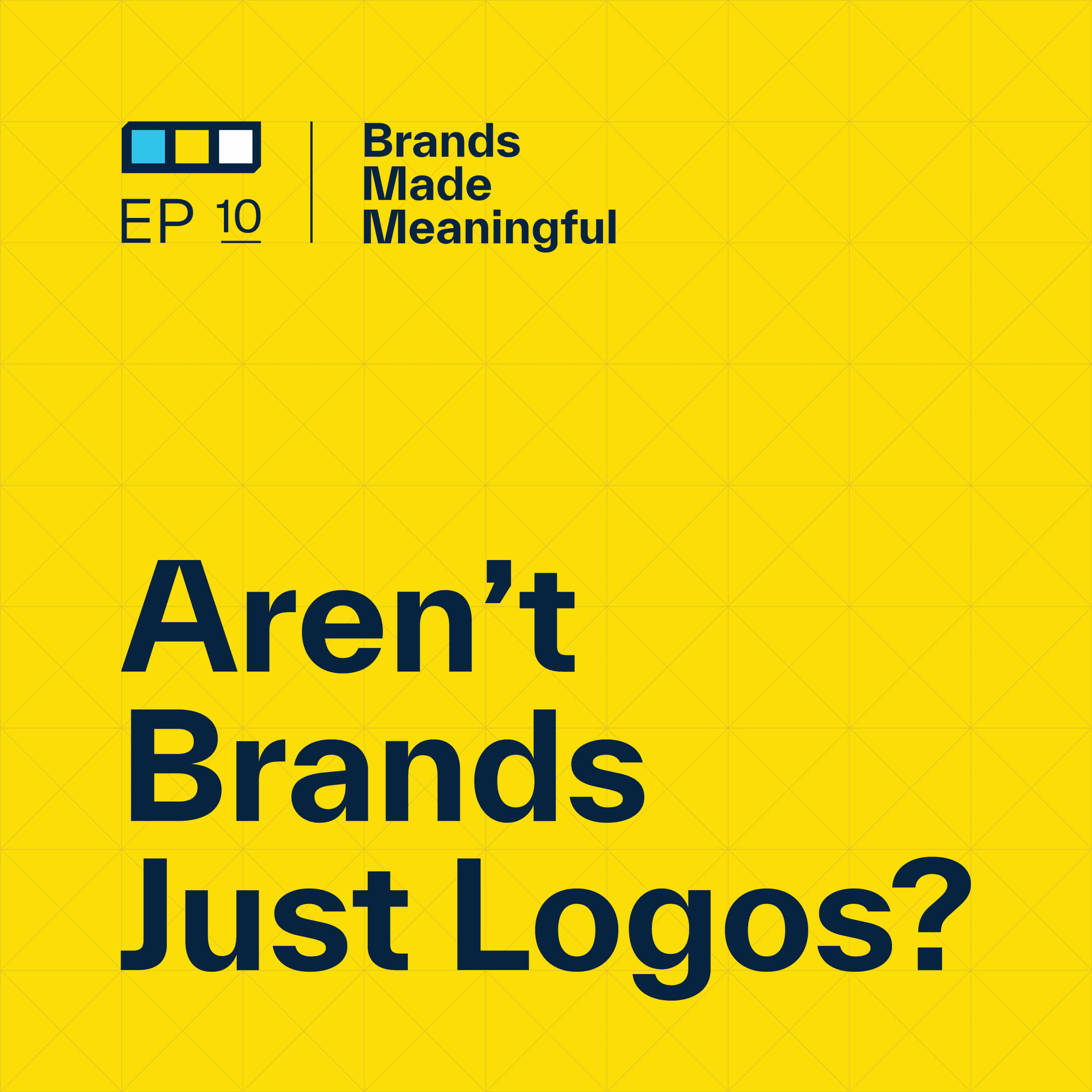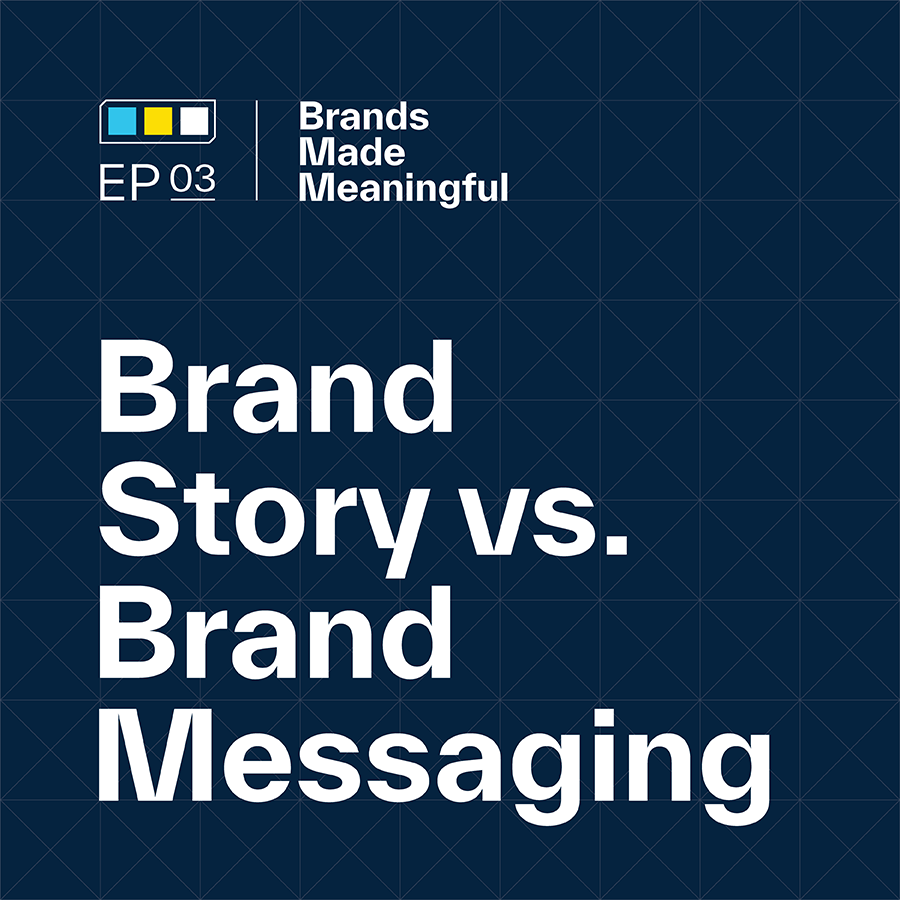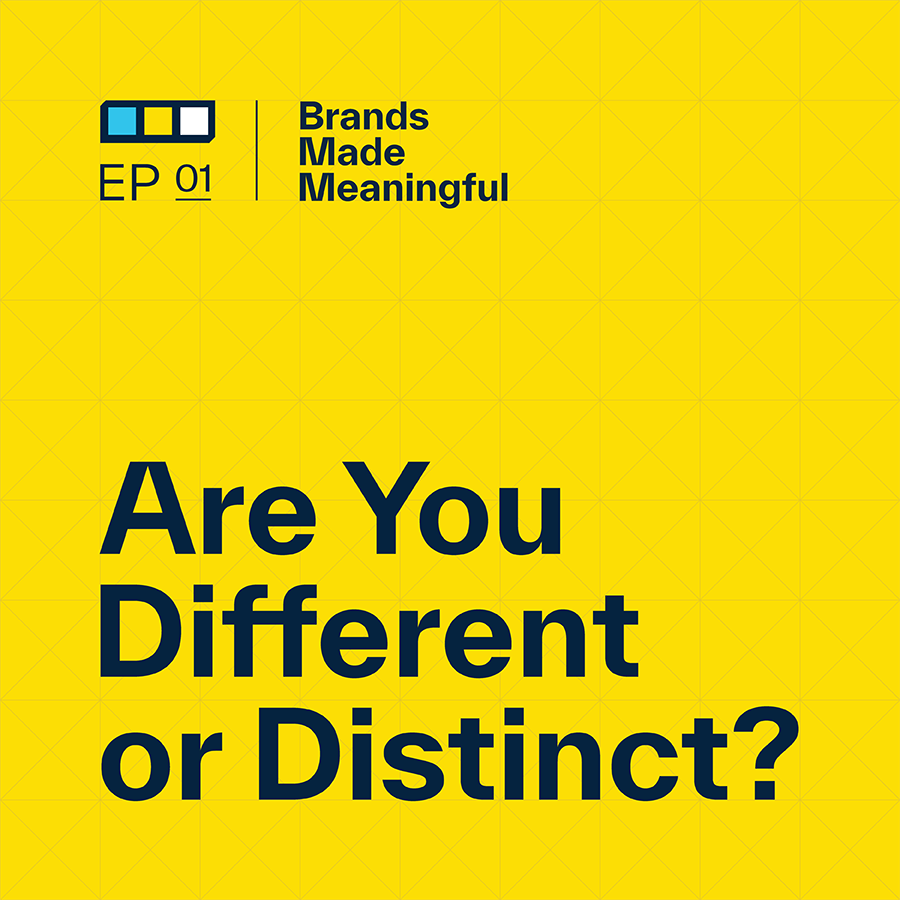EPISODE 11
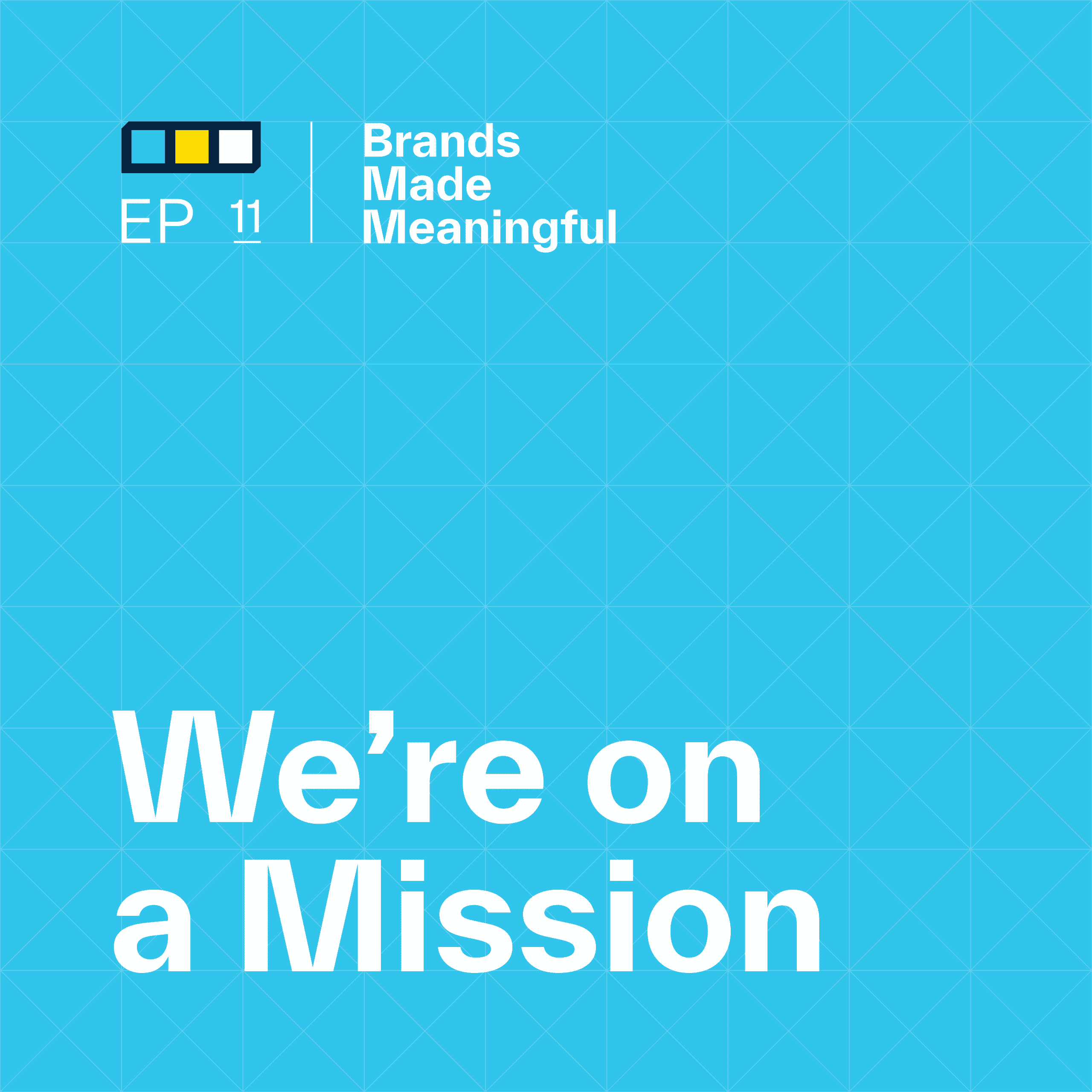
We’re on a Mission
Episode 11
This episode digs into the rallying cry for the greatness your team is going to accomplish.
EPISODE TRANSCRIPTION
We’re on a mission today!
Derek
This is one of your favorite conversations.
Tucker
I do enjoy this conversation. Just because there’s a lot of challenging going on, and I’m a challenger.
Expand Full Transcript
Derek
We had a recent conversation about logos, and I think that was the one I got a little geeked up on because that’s my background. You as the strategy guy, this is a backbone, or definitely a component of the backbone, of any brand strategy of any organization strategy-
Tucker
In our process-
Derek
In a way that we look at it-
Tucker
And I think some people might look at it differently. The way that we look at it, a mission statement (or a mission; I don’t really like to call it mission statements because they’re not that long) is a part of this foundation that then guides us as we build out certain things for the master brands, for certain companies. We’re working right now with a company that’s working on their internal brand. So they’re recruiting, they’re retaining, onboarding things; we use this a lot. This has a hand in a lot of the ways we start looking at who we are today and how we’re working so that we can become greater in the future.
Derek
Yeah, we work on companies that are launching products and we look at what the mission of that organization and of what those products are. We work with companies that are business-to-business and professional services. So a mission statement or a mission seems like a very obvious part of what would be part of that organization. Human resources or employment brands, is what they refer to as that internal brand, and we’re even having conversations with some sports organizations around how that fits in.
Tucker
Yeah, and professional sports specifically being more entertainment based, right? How are we working towards getting the fans what they want and how does that work? So a lot of things go into this.
Derek
Tee this up though, mission statement is a big word.
Tucker
Yeah, so if we’re talking about missions (we had a conversation about visions before, so this is kind of in tandem with that. If you haven’t listened to that one, it might be helpful to listen to that one first, then come back) because the mission really ladders up to that vision. So if we understand a vision; this ideal state or this ideal world that we’re trying to create, then this mission is really what we’re doing today or in the next couple of years to help us actually get to that state.
Derek
The vision is a picture of where we want to go as an organization, and the mission is how it is that we’re going to get there.
Tucker
Yeah, in the simplest way of saying it. I think when we get down into writing these or crafting them, we aren’t the type of consultants that would come in and write it for you. Our job is to listen and to prod and to challenge-
Derek
Facilitate-
Tucker
Facilitate that conversation. I think a lot of consultants come in and they write it for you, “Hey, you said this. So here’s your mission statement. Thank you very much. Have a good time. This is what you’re trying to do.” I think for us, it only works if you believe it.
Derek
It comes from you.
Tucker
It only works if it’s inspirational to you and your organization. That’s not something that we can create. So when we put definitions on it and we’ll talk about this later, but when we put these definitions on it, they’re really loose. We have a way of getting to the solution, but every solution is a little different because of the different types of organizations we deal with and the people.
Derek
We have a model that we’ve put together, that we title ‘foundational branding’. And there are a handful of components in that, which we’re not going to get into all those today, but when you start at the very top, it starts with the purpose of the organization. And then it goes to the vision of what we just talked about, it’s where are we trying to go? And then it gets to the mission. It’s not perfect; it’s just a model. It’s not a template. It’s not a Madlib where you just fill in the blank, because every organization’s goals and purpose is different. So our job isn’t, like you said, to define any of these components for an organization. It’s to help us draw it out, understand it, and then articulate it with them.
Tucker
When we craft these different pieces; this purpose, vision and mission (and we go down to the core values and all these other things, but we’re not going to get that far) but to say the purpose, vision and mission, we always start by crafting it that way. Purpose, vision, mission. But I like to read it the other way, when we’re finished, I like to read it from mission, vision, purpose. To say, What are we doing? If we achieve what we’re trying to do, what world is that creating? Who are we now and where do we live? And all this other stuff, that’s the vision. And then why do we want to live there? That’s that purpose. So if we’re talking today about that first step of what are we doing? We think of the mission as the current task at hand, is what we’re doing to move us closer to that ideal state and then how we’re going to move our customers or our society forward from here.
Derek
So you just said task, and task meaning a box that you can check?
Tucker
Yeah, an ideal mission in our mind does three things, and we’ll get into that in a couple of minutes here. But when I say task, it’s like the overall strategy. So I think of the mission as the strategy being used to get the company to where it wants to be. So what are we doing? At a very high level; it’s not like, “Oh, I need to come to work today.” That’s not a mission, that’s an actual task.
Derek
Right.
Tucker
But to say, “Okay, if we’re going to do X, if we’re going to achieve what we want to achieve and get to this ideal state, what do we need to do?
Derek
So it’s a bit of a rally cry.
Tucker
I think so. When we look at creative specifically, I think the most inspirational creative starts coming out of this mission. Because when we look at, what are we trying to do today? Who are we? What are we really about? What are we trying to achieve? In a short term that can drive a lot of creative juices.
Derek
The messaging that we write that comes to life in tangible marketing pieces and the visuals that support that; icons, symbols, pictures, the language of the mission becomes incredibly inspirational to the creative team executing those pieces.
Tucker
Correct, and when we look at that mission, we have clients, customers, people in general ask us, “So what’s the timeline on that?” And sometimes we put timelines on those things, but generally we would say that a mission needs to be readdressed every 3 to 5 years. It doesn’t need to be changed every 3 to 5 years, it needs to be readdressed. To say, “Are we still trying to do that? Is that still our strategy?” And maybe it gets tweaked a little bit, maybe it gets moved around, but it’s starting to understand that this mission is a finite thing.
Derek
But the vision statement is a little bit different.
Tucker
Yeah, the vision is this ideal state, and some people would consider that infinite. Other organizations consider it just extremely long term, like 20 years from now or 15 years from now. It depends on your leadership structure. So some organizations find it much more inspirational to have a vision an end state that is 20 years out. It’s like, “We’re going to get there and I know we’re going to get there.” Other people are like, “I don’t like how finite that is. I like something more infinite. something moving that we can constantly look back at. We are always working to do X.”
Derek
So that’s another defining difference between the vision and the mission and how they work together. The visions usually a longer term or infinite goal, and the mission is still inspirational, but there’s some sort of measurability to it where you can look at it and say, “Are we doing these things or not?”
Tucker
And when you say short term, some people think six months, one year. We’ve only had a handful of people come back with that’s the most inspirational for them. We would consider those milestones. What do we need to do this year to be able to reach what we want to do? Really, that mission is a couple of years out.
Derek
So I’m jumping ahead in our conversation, but structurally, if you think of the vision statement again as this finite goal. So people can see this, underneath the vision is the mission of where it is, how we’re going to get there. And then potentially underneath that mission might be three milestones that are key performance indicators that might even be this year’s milestones that will help us know that we’re working towards this three to 5 to 10 year mission.
Tucker
Yeah, we call them milestones. Some people might call them goals; just, “what are this year’s goals?” We use a lot of people-strategic pillars when they come with organizational structure and strategy and how they are as a company. Utilizing those pillars to inspire those goals, those short term goals, which then ladder up to this larger mission. So if we’re trying to do something very large, then what are the little things every year that can get us there?
Derek
Well, there’s a bunch, but one of the biggest challenges that an organization will run into (and we’ve just recently experienced this) is a team that’s been tasked with setting those strategic pillars for the year. Your goal for your department is to come up with three things that your department’s going to do this year to be the most beneficial and the most helpful to our overall organization. And this specific organization that we were talking to didn’t have a mission to influence and inspire that goal-setting session. To say, well, we can set goals that are, you know, “We win. We lose. We make this much money. We make this much profit.” But it’s hard to set those strategic pillars if you don’t have that mission statement to guide you.
Tucker
And it really comes from the conversation that those cultures are having internally when they say, “Hey, we’re trying to set these goals, but what’s our end game here? What are we trying to achieve long term?” Is it just to be really profitable? And if so, that wasn’t quite inspiring them enough. And I think that there is this idea of inspiration that can absolutely drive this, but it’s really hard to say, “Hey, we’re trying to be financially successful.” Which financial success is absolutely important to this, but it can’t be the end game. It can’t be that final thing. If, “When we’re financially done, then we’re cool, we’re done. We’re we’re good.” That just doesn’t seem to inspire. From what we’ve found, it does not seem to inspire cultures.
Derek
It’s too short term of a mindset.
Tucker
It also doesn’t really pay off for everyone. If as an organization of hundreds of people or even thousands of people, if we have a goal to make so much money, but at the end of the day, you’re not going to see all that money. You may get a little bump in your pay, and that’s great. But that money means nothing to you, right? So what are we doing to be able to say, “Hey, you’re working towards X, because here’s the bigger thing we’re trying to achieve.” So that’s the bigger goal with this. But the problem with the current state of most missions, or what mission statements are out there, is that these are developed internally, which is exactly how they should be, but they’re really not handled with the type of need that they require, if that makes sense. So if we’re saying, “Today, we’re just going to look at what we need to do, we’re going to write it down and we’re going to go after it.” But really, a mission statement should or a mission should really be crafted with other people in mind. So talking from the bottom up, what are these people doing? Why did they come to work? How are they doing all this stuff? To understand that ladder up approach, because if you’re just writing a mission that is to achieve a certain amount of profitability by the year xx, that’s not really going to inspire anybody and it’s probably not going to go up anywhere. You’re probably never going to use it.
Derek
It’s not inclusive. It’s not inclusive to the team.
Tucker
Yeah, and it’s not aspirational. It’s not really something that can drive success. I mean, it’s something that’s a goal, it’s a shooting point, but it’s not gunna work.
Derek
I had a person that I worked for well over two decades ago, had said this great comment to me as I was going out on my own. And he said for that employee, there are three things that create an ideal work environment. We just talked about being paid or compensated. First, you need to be paid fairly. You need to feel like you’re being compensated fairly-
Tucker
For your value.
Derek
Secondly, you need to like the people that you work with. So there’s a cultural aspect to that. You need to feel like you’re part of this team. And the third thing is, you need to love what you do. And that’s where I get a little bit of the mission statement. You need to be on board with what this organization is doing and where it’s going and feel like you’re part of something bigger than just taking home my paycheck.
Tucker
I think that’s more than the mission, too. It comes down to the purpose and the vision and all these other things, but when we’re talking about the mission specifically, it’s really hard to talk about it without connecting it. If you’re just writing a mission without thinking of any other avenues of, “Okay, how does this ladder up? Or how does this ladder down?” Then you’re probably not doing it effectively because it’s not really going to do anything for you. You could throw it up on your ‘About US’ page, but it’s really not going to do what it needs to do.
Derek
Yeah, we were talking about this before we hit the record button. One of the one of the problems of having a mission statement that isn’t meaningful is nobody even knows that you have one; your employees don’t know what it is. I’m not saying it has to be memorizable, but it needs to be memorable. If you have a great mission statement already, then everybody in that organization should be able to in some way, shape or form say, “Well, this is what we’re doing and this is what our mission is.”
Tucker
Let’s get into the three things that a great mission has, and then I think coming back to why a mission statement is so important or a mission is so important. So the three things, I’m going to rattle them off really quick and then we’ll talk about each one of them. One, It has to be aspirational: it has to be big, it has to be hairy and audacious, it has to be something that people go, “Absolutely. Let’s get after it.” Two, it has to be measurable: it has to be something that we can look at and go, “Okay, yep. I can count that. I know where I’m going.” And then three, it has to ladder up and down. So it has to be connected up to the vision and it has to be connected down to your strategic pillars. And if we can do those three things, then this statement or this just set of words can really make a difference in the way that we’re moving forward. So unpack each of these. One aspirational; it’s got to be hairy and audacious.
Derek
Yeah, it’s Jim Collins, “From Good to Great,” your big, hairy, audacious goal. It’s aspirational. It’s bigger than a milestone. We’ve talked about infinite versus finite, and it is finite. It’s like, what’s the difference between qualitative and quantitative? If you’re getting stuck on and hyper focused on specific short term goals, those are not your mission. So if you think of those as milestones or strategic pillars or even what we would refer to as critical actions. Collectively, if you say if we are doing all of these things and we achieve all these things, what’s the next level up that’s a little bit more aspirational that they will help us achieve? And that laddered up piece is probably closer to your mission.
Tucker
When we say people aren’t aspirational enough with their missions, it’s probably because they’re getting stuck on these specific goals, these short term goals that are these milestones, which then really make it hard to have a clear picture for that future. If we’re so focused on what we’re doing this next year, that we can’t see down the road at least another year or two from now, then you can start seeing where that has problems.
Derek
If a company runs on EOS or Traction, you might think of this as the three year picture. That aspirational- if we are working towards these things, for some organizations that might that might help.
Tucker
Yeah. In EOS, it’s a ongoing thing, though. You reset your three year every year. I think with a mission it’s more, “What are we trying to achieve? Let’s try to get there,” and then we can reset it. So if one is aspirational, two is measurable, when when we’re looking at a mission and it’s not measurable, does that mean it’s wrong?
Derek
For some organizations, no. Some companies that we work with lean, hyper-aspirational. Almost along the lines of a vision. But so it might have a number in it, like, “To serve 1 billion people.” Well, that’s huge. Depending on what you do, to touch a billion people is massive. But the fact that there’s a number in there makes it measurable. At some point in time in the future, you can look back and say, “Did we hit a billion or not? Yes or no?”
Tucker
Some people would say, “Is there a timeline on that? Is there a deadline?” So if you wanted to serve a billion people, are you doing it by a certain day? So when we talk to clients, that gets a little fuzzy and it really, really, really depends. And this gets back to when you said it’s not a template, this is a framework, this is a philosophy really on how to talk about these larger picture things. If it’s not a template, then no. If it doesn’t inspire you, if it almost gives you anxiety to think about a deadline to something so big and that’s not going to help your team, then don’t put it in there. It’s as easy as that. So if ideally it’s measurable. Let’s say instead of a billion, maybe you go for a million; that’s a little bit more achievable. And maybe you don’t put a deadline on it because you say “Here, this is what we’re working towards. I don’t know what the actual number is.” I think there’s a lot less value saying has to be done by this day than just saying let’s get it done.
Derek
Yep, I agree. Some companies will go to that measurability of being the biggest; the best, the largest. I’m usually not quite as excited or inspired by those sorts of positioning components that come into the mission statement, though they are appropriate for some.
Tucker
So let’s take that and move on to the third one where it has the ladder up and down. Because to me, being the best is, well, one being the best isn’t actually measurable. Best is an opinion. Being the number one in the market, it absolutely is measurable to say, “Oh, maybe our market caps. The percentage of whatever, that’s ours. We lead the market in this.” Then I would say, “Okay, how is that laddering up? And what’s the goal? If you hit that, then what is this world that you’re creating? What is this bigger picture thing that you’re doing? And is being the best, having the largest organization really helping you get there?” Or is that just an internal goal that’s fulfilling your own ego? It’s just fueling yourself to say, “Look how great I am.” When we talk about missions, it’s easy to think about what we are and how we can be better and what do we need to do? But it’s better if you think about it in terms of, “If we achieve this, what does that mean for other people?” If we can achieve this mission, then what does that mean for everyone else? What does it mean for our customers? What does it mean for society? What does it mean for the world? And does it help anyone else? Because if it doesn’t, then that’s going to be difficult. So when we ladder it up and down, we’ve got to make sure that we’re laddering it for sure up to the vision; to say, “What’s this ideal world we’re creating?” And if the ideal world is just, “We’re the best,” then I think there needs to be a little bit of a realignment on what our goals are. So one aspirational, two measurable, and three it ladders up and down. And if we can do those three generally (and there’s a little looseness on that measurability) but to say, “If we can do those, then we’re in a really great spot to inspire the people that work for us.”
Derek
Yep.
Tucker
Finally, let’s get into why. Why does it matter to have a great mission? If we’re trying to have a great mission, then what are we really getting out of this?
Derek
To me, the mission is the cornerstone of your culture. The next component that we will talk about another time are values, core values, and value propositions. And if you’re looking at the people that you need on your team, having a mission is a great measuring stick to say, “Well, then who are the people that we need if we’re going to try to achieve this, if this is our mission?” And it starts to define a picture that compels those people that are right fit to work harder, to stay longer, to know that they’re included and part of helping this organization work towards and maybe ultimately achieve this mission.
Tucker
We use an analogy, a military analogy when we talk about this in our workshops with clients, and I’m sure we talked about this in the vision conversation. But when we talk about the military, I’m just going to jump straight into it. So core values are the type of soldiers we need on our army to be able to win. The mission is to win the war. So if the mission is to win the war and the vision is to live in a world after that war, (so we’ve won the war, this is great) what does that mean? Where are we now; this ideal state that we are sitting in? Then the purpose would be, why do we want to be in that state? What does that state really mean to us and how does that help us internally? So if we think of the mission as winning the war, you can start to see how that draws people in. There is a rallying cry. There is this idea of, if we have this really, really inspirational mission that’s going to rally people up. Whether they are people who don’t work for us right now and we’re trying to recruit, or we’re trying to retain and we’re trying to get people who already work for us to be really excited about what we’re doing. That is a lot easier for people to digest than a vision statement. In my mind, the vision and the purpose are very, very up there. They’re very ethereal where you’re going, “Okay, well, yeah, we’re trying to do this because our purpose is X.” And if you’re not quite at that level, let’s think of people who are on the front lines, the people who are like, “Hey, we’re doing production. I’m in the manufacturing line.” If I hear that vision statement and that purpose statement, I don’t see that every day. I’m probably going to roll my eyes at it because that’s way too up there for me.
Derek
Too vast.
Tucker
Way too big. But that doesn’t mean it’s not important, it just means that that mission needs to really connect with everyone at the organization. So the mission’s purpose is to rally everyone. The vision’s purpose is to keep us true on where we’re going. And the purpose-
Derek
Is the North Star.
Tucker
Is the North Star. It’s, “Okay if we’re trying to really get somewhere, why? Why do we even want to do that? How do we guide ourselves?” So this mission is incredibly important to that culture. Like you said, it’s a cornerstone of culture. I mean, it rallies the entire team, but it can’t rally them if they don’t understand what’s going on. And if that is not connecting with them, then it’s going to fall flat. And that’s where you get to this piece that ends up just sitting in boardrooms and maybe it goes up on the wall somewhere, but people just walk by it because they don’t even care. And I think that’s where we run the risk of wasting time, energy, and finances on trying to figure out what this is, but never actually getting somewhere. Because we’re not doing it right. We’re doing it as a template, not as a framework. So people who get into this, “mission-only” mindeset, that’s the other that’s the flip side of this coin. So missions are incredibly helpful for rallying cries, but what happens when an organization has a mission but they don’t have anything else? And they’re really behind that mission. We talked about a billion people, but maybe it’s not a billion people. Maybe it’s a million people. Maybe their mission is, “We’re going to serve a million people” or a million organizations or something like that. But what happens when we get so hyper focused on that and then we actually achieve it?
Derek
Yeah. Now what? Now what do we do? Do we start over? I mean, I’m assuming most organizations have the foresight to have reset that goal along the way, but I told this story in a previous conversation about one of my favorite golfers of all time. His name is David Duval, and he was the number one ranked golfer in the world for a long period of time when Tiger Woods was at his peak. And David Duval went out and he won the open championship. And I’d have to check my stats on this, but I don’t believe that he ever won another tournament ever again. Then in interviews with him afterwards, they basically said, “Well, what happened? You achieved it. You reached number one. You are now a major champion. You’re probably going to be in the Hall of Fame. Why didn’t that lead to greater success?” And he said his goal was to win a major championship or to be a major champion. It was finite. It was so measurable and so finite that he literally checked that box and he said, “Well, I did it.” And then in hindsight, he said, “My goals weren’t big enough. My vision wasn’t grand enough to take me past and beyond that specific moment in time.”
Tucker
His ideal state was to win once, and that ideal state ended up biting him in the back because he wasn’t quite thinking two steps ahead.
Derek
So we talk in sports analogies a lot and there’s a lot of aspiration and inspiration between sports and business.
Tucker
And we do a lot of sports. I mean, we work with a lot of sports organizations.
Derek
So that makes it even closer to us. We were talking about professional sports, which is a little different than college level sports. But professional sports are trying to win, right? There seasons are based on wins and losses. Managers, coaches, GM’s coaching staffs; they get fired, they come and go based on wins and losses. But, I think what our conversation was, let’s say they win a championship in whatever sport that they’re in. I think that we’ve run into some sports organizations where winning that championship is their vision.
Tucker
Yeah, that’s the ideal state. It’s too big. In their mind, they think, “Well, if we could just win a championship-“
Derek
“Just Once.”
Tucker
“That would just be, Oh my gosh.” And I think that oh-my-gosh-state, that they’re like so head over heels on, I think really clouds their judgment on what they’re really there for. And the idea is, well, if you’re going to win it once, like David Duval, are you just going to be done?
Derek
What if you never win?
Tucker
You cash in all the chips to win once? Would you rather win one championship and never, ever do anything else? Like just lose every game from then on? Or would you rather be challenging for multiple championships a year?
Derek
And when you take it back to the cultural component, how about the people that work in the H.R. department or the ticketing department? They have nothing that directly affects what’s going on on the court or on the field. Like the professional basketball team in our city, it’s been around for 20 plus years, has never won a national championship. I personally know somebody who’s worked at that organization the entire time that they’ve been here, and he absolutely looks at his career as a success because he associates himself with being part of something bigger than just that particular season’s win and loss record.
Tucker
Yeah, and wins and losses can really catch up to people. Right? And we say it in sports analogies all the time, but when you think about it in non-sports analogies, it’s every year. I mean, you can look at a financial year as a win or a loss. And if you lose enough times it starts becoming terrible, but if you win greatly once, do you then just close up shop? Well, some people do. Some people cash in, they’re like, “I’m done with this.” But it’s really hard to have a long lasting organization if you’re so focused on winning the championship every year.
Derek
And it’s hard to have a team of people that will stick with and be part of that organization for a long time because they’re all on board and working towards that mission.
Tucker
Yeah, and what happens is when we’re so focused on winning that championship and we don’t win a championship, then there’s trouble. Right? Where people aren’t happy because that’s what they signed up for, is to win a championship. What are we doing here? Why are we even doing this? They start becoming annoyed because all of our efforts are all to just win this championship. If we can’t do that, then why are we even working?
Derek
So that’s where we said, take the wins and losses component for whatever that means in your organization. Especially if it’s for this year or this quarter, and move those down underneath the mission into milestones, or measurables, or strategic pillars.
Tucker
Yeah. So if we’re going to win, if we’re going to do it all, if we’re going to get this mission, what are the things we need to do to be able to get there? And that starts becoming more clear to say, “Well, maybe we didn’t win it this last year, but there’s things that we can still take away from it and move forward with it. Instead of always trying to hit the same level, we’re going to keep moving forward every year and eventually we’ll get there. But once we get there, that’s not it. That’s not the end of the road.” It’s not a movie. This isn’t the final act, right? The company has to go on. Once we achieve that mission, we need to think of what’s next, but we have to be thinking about that now.
Derek
What happened to Rudy after he scored that touchdown and led them to glory?
Tucker
That’s a good question.
Derek
Whatever happened ten years later, 20 years later, hopefully it’s something fantastic.
Tucker
I would hope so. I think we’re good for now. So any other points?
Derek
One thing that might be helpful for you; who’s listening to this, if you hop on our website, if you go to Sussner.com under our “freesources”, we have a downloadable called “Stories Made Meaningful.”
Tucker
Yeah this is how we start conversations around stories, and a story is a lot different than your mission, but it starts asking the questions.
Derek
And your mission is part of your brand’s story.
Tucker
Yeah, absolutely.
Derek
It inspires your brand story.
Tucker
It’s what you’re doing, right? What are you doing to get somewhere? What are you doing to create value?
Derek
So it’s a free download, and it basically introduces six questions, six thought-starters that will help you and your team start to think about, “Is my current mission really a mission? Or is it too finite? Or I don’t have one at all and I’m overwhelmed.” This is just intended to be a helpful set of questions to get you thinking in the right direction.
Tucker
Yeah, we did this in hopes to say, “Hey, we get a lot of these questions. Here’s a way that you can start working on it without feeling like we’re over your head asking you for stuff.” They are 100% free. We don’t even ask for an email. You don’t even need it. You have it. It’s better to keep the information out there rather than just keep it in our conference room.
Derek
Hope it helps.
Tucker
All right. Until next time.
Derek
See ya.
More Episodes Like This
Taking Care of the People Who Take Care of PeopleEpisode 90
Derek and Tucker are joined by Craig Pratt, co-founder and board chair of the nonprofit organization Holes Fore Hope.
Reviving New Member InterestEpisode 89
Derek and Tucker explore options for generating interest among prospective members and inspiring them to join your club.
Brand Through the Eyes of a Club Manager & Consultant with Chris CoulterEpisode 88
Chris Coulter, Vice President of Club Consulting with the McMahon Group, joins Derek and Tucker to discuss the intersection of branding and consulting in private clubs.
Evolving Member ExpectationsEpisode 87
Derek and Tucker dive into the differences between generational club members, their wants and needs, and how to balance out expectations across the board.
Winning the Talent Game with Tom WallaceEpisode 86
Tom Wallace of Kopplin, Kuebler, & Wallace joins Derek and Tucker to discuss the importance of a club’s brand in hiring and retaining right-fit employees.
Reclaiming Reputation Through Brand RevitalizationEpisode 85
Derek and Tucker discuss the potential that a branding initiative can have to restore a club’s reputation.
Branding The Club with Don KovacovichEpisode 84
Don Kovacovich, GM of The Club at Golden Valley, joins Derek & Tucker to discuss the impact that rebranding has had on his club and the opportunity it presents for other clubs
Changing a Club’s Membership ModelEpisode 83
Derek and Tucker discuss key considerations and challenges when changing your club’s membership model.
Connecting a Club with its Story with Jackie CarpenterEpisode 82
Derek and Tucker are joined today by Jackie Carpenter, author of People First.
Branding a Club AnniversaryEpisode 81
Derek and Tucker discuss the unique opportunity presented by milestone and anniversary dates for private clubs.
Private Club Storytelling with Ricky L. Potts, Jr., CCMEpisode 80
Derek and Tucker have the pleasure to speak with Ricky L. Potts Jr. about how powerful storytelling can be for your club members.
Opportunity in Club Facility RenovationEpisode 79
Derek and Tucker discuss pivotal key moments in your legacy and how to transform your story through renovation.
The Evolution of Club Members with Jon LastEpisode 78
Derek and Tucker are joined by Jon Last from Sports & Leisure Research Group to discuss the evolution of club members.
Member Branding vs. Product BrandingEpisode 77
Derek and Tucker discuss the challenges their client's have moved through when approaching differing styles of branding.
The Role of a Private Club's LogoEpisode 76
Derek and Tucker take a look back on private club logos they've designed over the years and explain the strategic reasons behind their choices.
Club Brand GovernanceEpisode 75
Derek and Tucker divulge the steps to evolving your brand while retaining your core values.
Seasonal Member MerchandiseEpisode 74
Derek and Tucker take a look at crafting specific merch to celebrate landmarks and special times of the year.
Who is Sussner?Episode 73
Derek and Tucker take a break from talking shop to talk about who they are and what they stand for.
Club Identities Beyond AmenitiesEpisode 72
Derek and Tucker discuss what it takes to stand out in unique ways for your club.
Little Things Mean EverythingEpisode 71
Derek and Tucker take a look at the often missed and easy to overlook.
Build Flexible Brand SystemsEpisode 70
Derek and Tucker break down the building blocks for long lasting branding.
The Club at Golden ValleyEpisode 69
Derek and Tucker take a close look at one of their recent rebrands.
When to Launch a Club RebrandEpisode 68
Derek and Tucker break down how to find the perfect timing when launching a club rebrand.
Steps to Launching a Club RebrandEpisode 67
Derek and Tucker break down the steps to take and the reasons why you should consider a club rebranding.
Brand Marketing vs. Brand DesignEpisode 66
Derek and Tucker define the line between marketing and design and how they intersect to inform one another.
Building Brand GuidelinesEpisode 65
Derek and Tucker show us how to build infrastructure guidelines to unify your brand experience across the board.
Club Identity SystemsEpisode 64
Derek and Tucker cover what Identity Systems entail and how to discern between internal and external methodologies.
Navigating Branding With a BoardEpisode 63
Derek and Tucker bring clarity to uniting your company under one cohesive vision.
Putting a Committee TogetherEpisode 62
Derek and Tucker assemble your need-to-know facts when putting together your committee.
The Guiding Principles of Private ClubsEpisode 61
Derek and Tucker go over the top ways private clubs can find the balance between pleasing old members while attracting new ones, all while making moves towards the future.
How Color Affects PerceptionEpisode 60
Derek and Tucker cover how to best convey your business with color.
Brand EcosystemsEpisode 59
Derek and Tucker break down how to craft effortless experiences when considering your brand as a whole.
6 Types of Brand TransformationEpisode 58
Derek and Tucker dive into 6 distinct types of transformations for a wide range of brands.
Tournament Branding For ClubsEpisode 57
Derek and Tucker discuss designing and delighting your club members with tailored events.
Brand Promoters & DetractorsEpisode 56
Derek and Tucker discuss how high level promoters increase your NPS and how to turn the tides on your detractors.
The Loudest Voices in the RoomEpisode 55
Derek and Tucker talk about gathering feedback while prioritizing every voice.
Determining A Primary AudienceEpisode 54
Derek and Tucker discuss if and when you should be honing in on your audience vs. casting as wide a net as possible.
Branding For ExclusivityEpisode 53
Derek and Tucker discuss the intricate process of naming your brand.
Measuring Brand SuccessEpisode 52
Derek and Tucker discuss how we measure our success in branding and a few key KPIs that help us understand our impact.
Branding For ExclusivityEpisode 51
Derek and Tucker breakdown how brands can create the perception that they are exclusive and only for a certain type of consumer.
What Makes A Brand SurprisingEpisode 50
Derek and Tucker break down the Sussner formula that we believe leads to a surprising brand.
Breathe Life Into Brand TraditionEpisode 49
Derek and Tucker discuss the intricacies and common pitfalls of branding for Private Golf Clubs.
They Key of Visual DifferentiationEpisode 48
Derek and Tucker break down the importance of differentiating your brand on a visual level.
Branding For Private GolfEpisode 47
Derek and Tucker discuss the intricacies and common pitfalls of branding for Private Golf Clubs.
Dealing With An Identity CrisisEpisode 46
Derek and Tucker breakdown how to identify and remedy a brand's identity crisis throughout thoughtful and intentional brand management.
Branding vs MarketingEpisode 45
Derek and Tucker discuss the differences between Branding and Marketing and how to make the two compliment each other.
Build Your Brand's FoundationEpisode 44
A brand's foundation is a critical element in being successful in the long-term.
Building a Constructive Branding ProcessEpisode 43
Derek and Tucker break down the steps required to build the most constructive and meaningful branding process.
What Makes a Brand Relevant?Episode 42
Relevance is a key piece of a brand's identity for creating clarity and connection.
Your Right to WinEpisode 41
Derek and Tucker discuss the “Right to Win” and the odds of your brand's success within your target market.
An Intro to Sub BrandingEpisode 40
Derek and Tucker discuss the nuances of developing sub-branding and strategies.
Conquer Branding FearsEpisode 39
Derek and Tucker dive into how to overcome the fear of change and the nature of constant refinement of your brand.
Balancing Strategy & DesignEpisode 38
Great strategy is a necessary foundation for great design—and great design brings great strategy to life.
Branding PrioritiesEpisode 37
Branding priorities are the actions and initiatives that shape or enhance a brand's identity, perception, and market position.
Invest in Your BrandEpisode 36
Investing in your brand benefits your company as a competitor in the marketplace, builds trust with customers, increases perception of quality, and drives employee engagement.
Why is Positioning Scary?Episode 35
Narrowing the brand's position is really a strategic decision to focus the brand's offerings, messaging and target audience on a specific niche or segment within the market.
What Are Brand Consultants?Episode 34
Derek and Tucker discuss the importance of hiring expertise with a wider breadth of knowledge than just visuals.
Hire for Brand FitEpisode 33
Hiring people that fit your brand is key in order to maintain brand authenticity, positive culture, and consistent messaging.
Your Brand’s Stance MattersEpisode 32
Your stance can help define your brand from a core level and make branding, hiring, and marketing not only easier, but more meaningful.
Levels of Executing a Brand RefreshEpisode 31
If you have a brand strategy in place, how do you execute it?
The Role of Features & BenefitsEpisode 30
Derek and Tucker discuss the importance of features and benefits within the context of branding, selling, and marketing your products and services.
Should You Listen To or Lead Your Customers?Episode 29
Within the challenge of any rebrand is the challenge of managing customers' perception of change.
Managing a Brand TransformationEpisode 28
Episode 28 discusses the highlights and challenges of rolling out a new brand, both internally and externally.
Living Your BrandEpisode 27
Your brand is not this shiny trophy on the shelf. It is something that you are molding every single day.
What Makes a Brand Authentic?Episode 26
Season 2 starts off with a discussion about building authentic brand experiences, both internally and externally.
Reviewing your Competition's CreativeEpisode 25
Derek and Tucker discuss the process of reviewing your competitors' creative strategy to better position your brand within the market.
Interviewing your Audience for InsightsEpisode 24
This episode details the process and benefits of interviewing your audience as part of the branding process.
Assumption ReversalEpisode 23
Derek and Tucker discuss how we change our thoughts and get into a different mindset to refine and revise our branding.
Developing vs. Amplifying a BrandEpisode 22
Another way to say it is, development is building and crafting your brand story, and amplification is then telling it.
Refreshing a Sporting Goods BrandEpisode 21
This episode shares the steps behind Sussner’s work in refining the Shock Doctor brand.
Defining PerceptionEpisode 20
Derek and Tucker discuss the positive and negative impacts of brand perception.
What is a Brand?Episode 19
Derek and Tucker discuss what defines a brand and what makes them successful.
Branding Golf Courses vs Golf ClubsEpisode 18
Derek and Tucker further hone in on golf course design.
Refreshing a Golf CourseEpisode 17
Derek and Tucker discuss the bar for golf course design – and how to push past it.
Let’s Talk Taglines Episode 16
Derek and Tucker talk taglines in today's episode.
Refreshing an Athletic DepartmentEpisode 15
Derek and Tucker sit down today to discuss what logos mean within branding.
Branding a Club Episode 14
Derek and Tucker discuss how to brainstorm branding a club.
An Intro to Internal Branding Episode 13
Derek and Tucker discuss the power behind internal branding.
The Value of Stereotyping Episode 12
Derek and Tucker sit down today to discuss the meaning of stereotyping within the branding world.
We’re on a Mission Episode 11
This episode digs into the rallying cry for the greatness your team is going to accomplish.
Aren’t Brands Just Logos? Episode 10
Derek and Tucker sit down today to discuss what logos mean within branding.
The Business You Are Really In Episode 09
Derek and Tucker sit down today to discuss how to discover what business you are really in to better understand your mission statement.
Clarity of Vision Episode 08
Derek and Tucker discuss the importance of looking ahead towards the big picture to better hone the purpose behind what we do in the now.
Branding B-2-B Environments Episode 07
Derek and Tucker discuss the Branding of Spaces.
It’s All in the Name Episode 06
Derek and Tucker discuss what a name can say - and not - about your company.
Delving Into Branding Data Episode 05
Derek and Tucker jump into the discovery phase of branding before it hits the drawing board.
Content Made Meaningful Episode 04
Today Derek and Tucker discuss the concepts within content and its common misconceptions such as the phrase "Content is King."
Brand Story vs. Brand Messaging Episode 03
Your story matters.
Visuals That Take The Cake Episode 02
Derek and Tucker sit down to discuss visual impact and what that could mean for your brand.
Are You Different or Distinct? Episode 01
It's not about being the only option, it's about being the right option. Join Derek and Tucker as they discuss Differentiation & Distinction.



